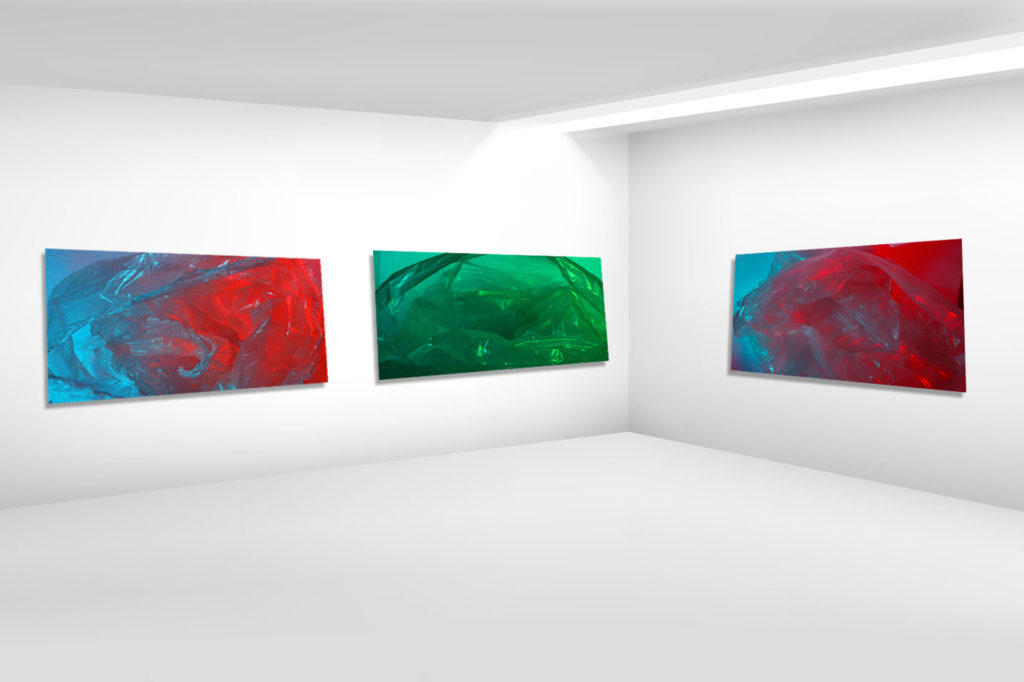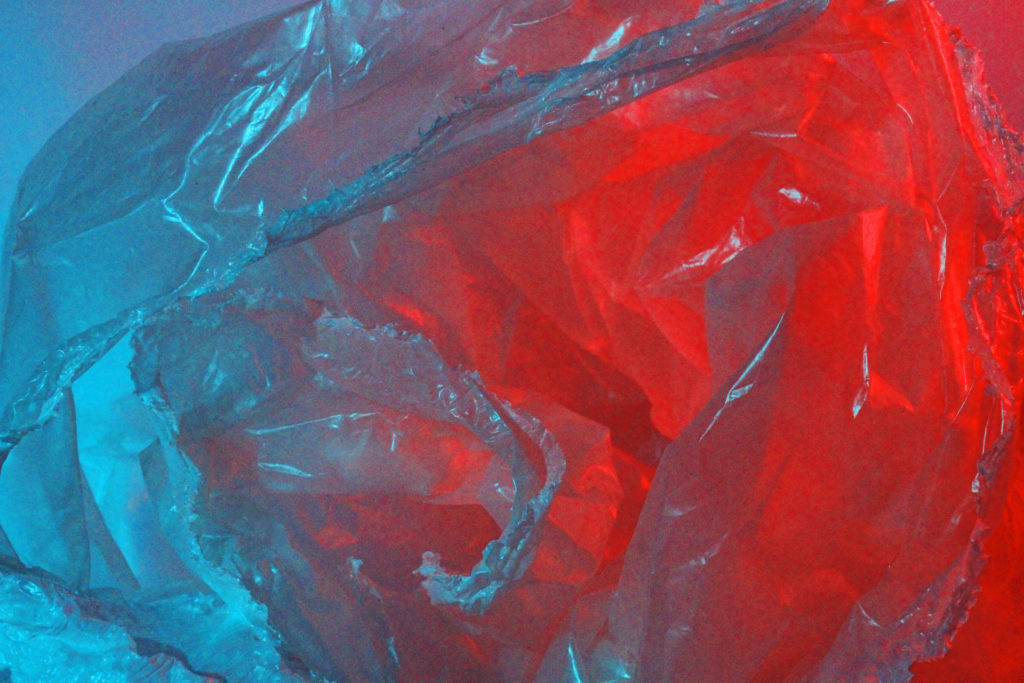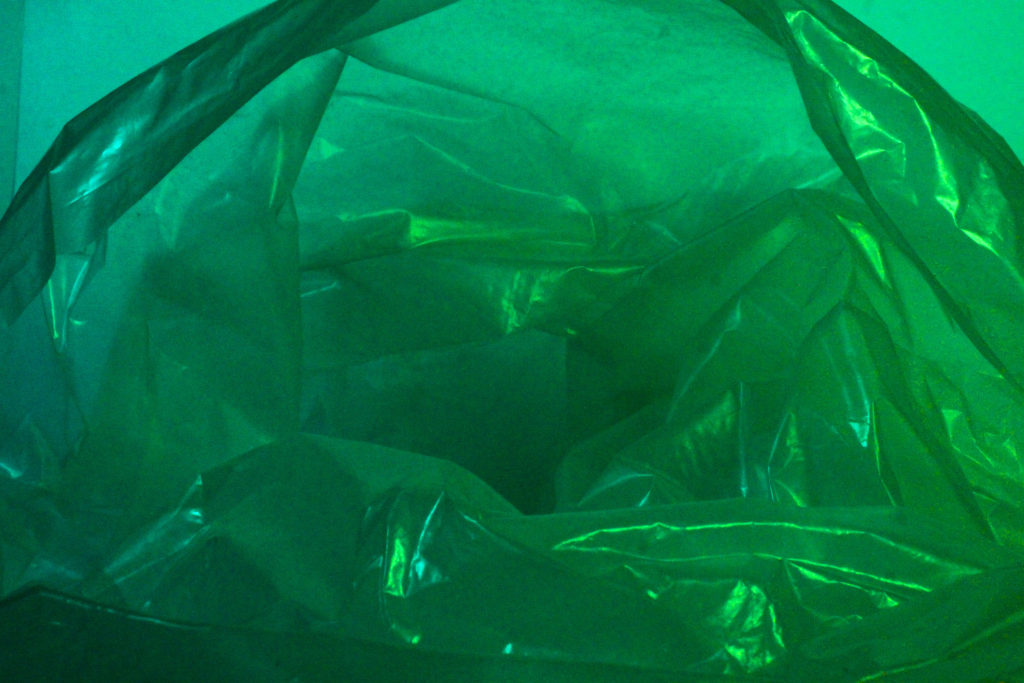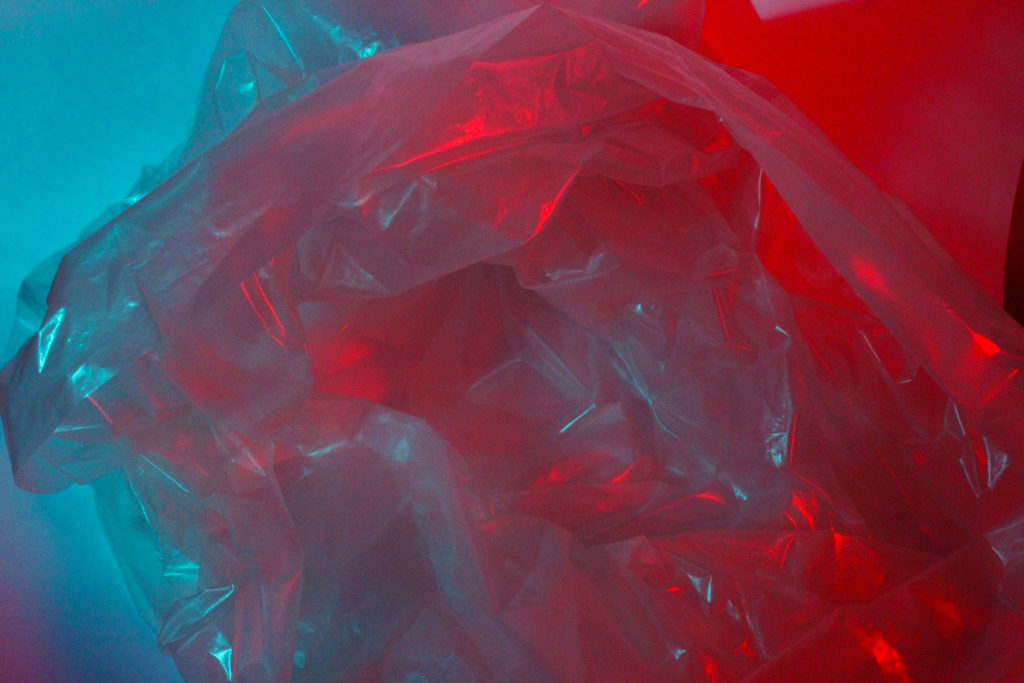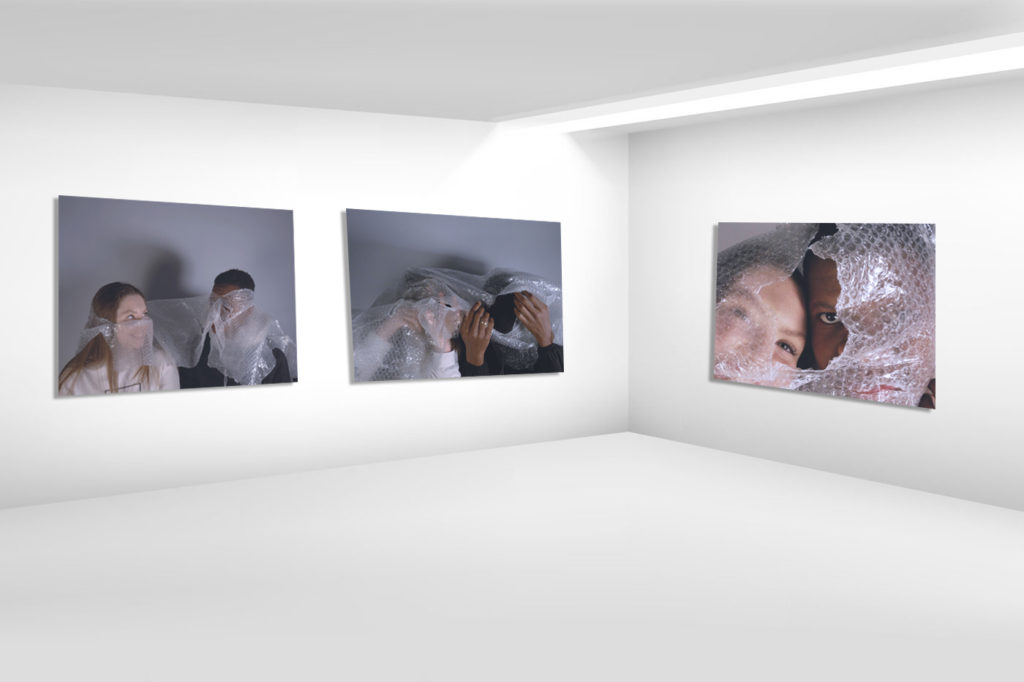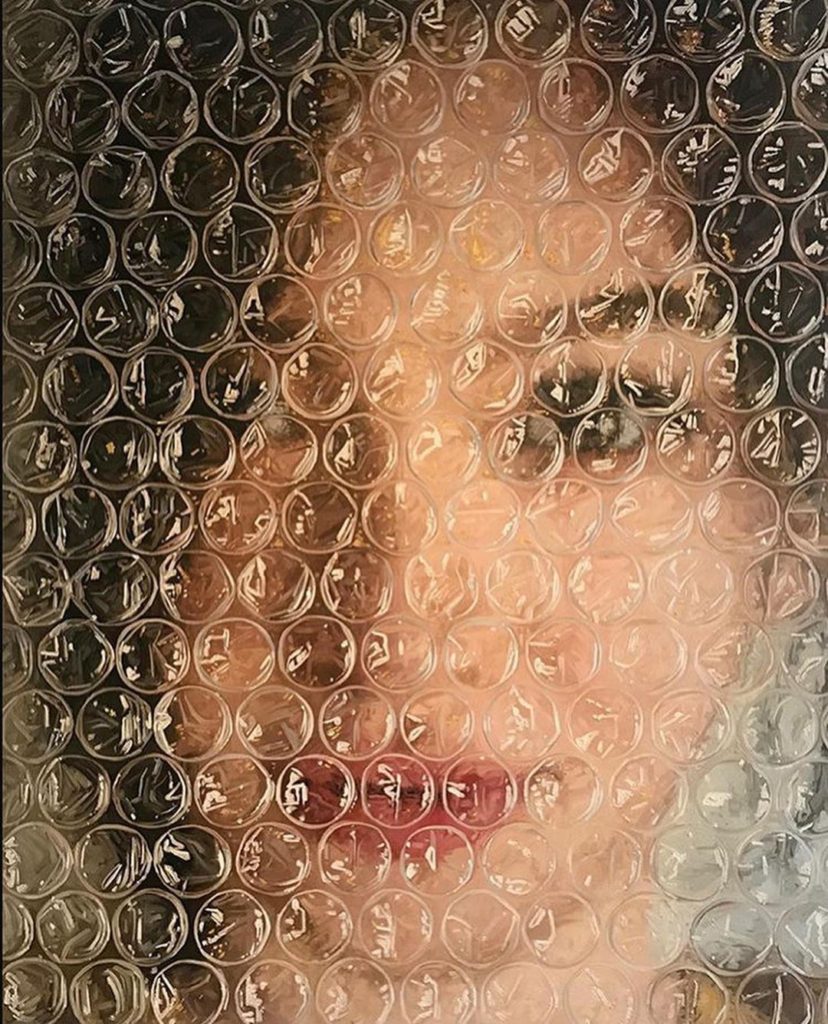
Darian Mederos 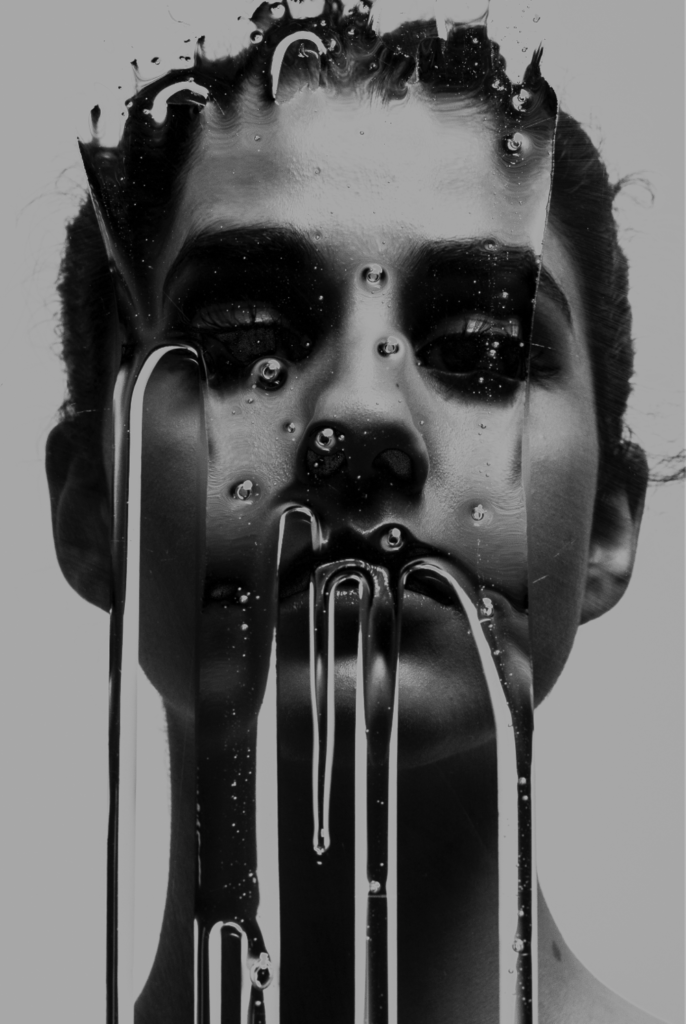
Nick Fancher
Differences and similarities:



Differences and similarities:

Darian Mederos
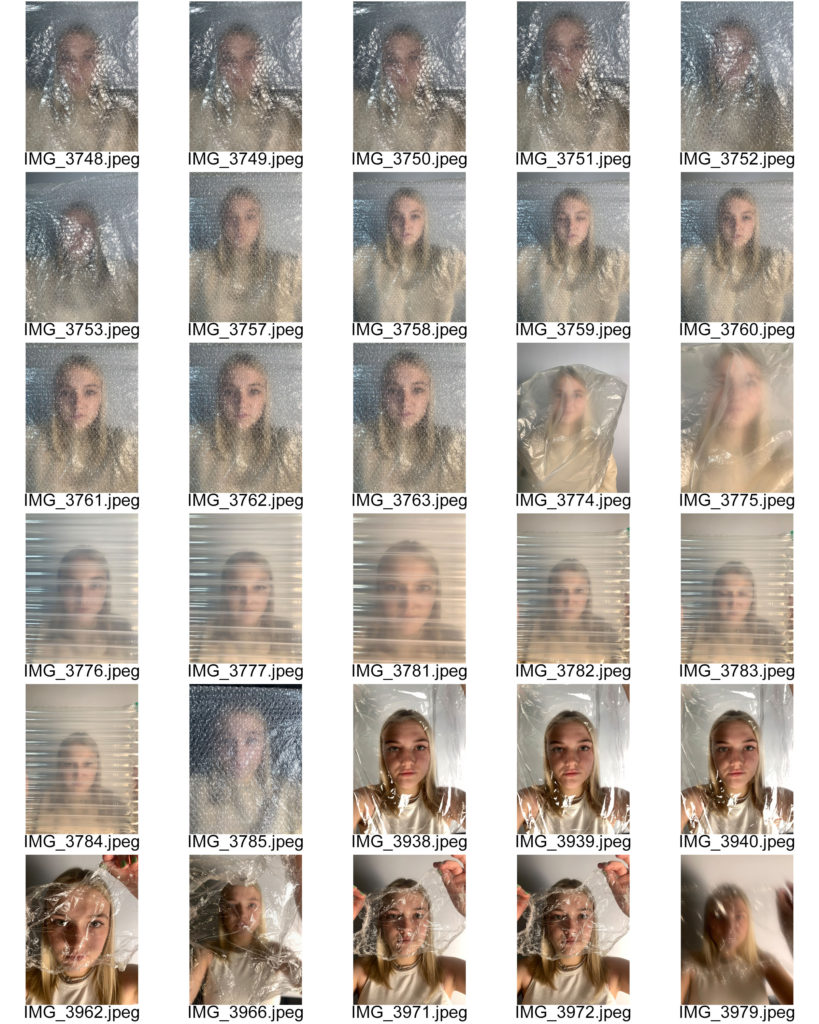
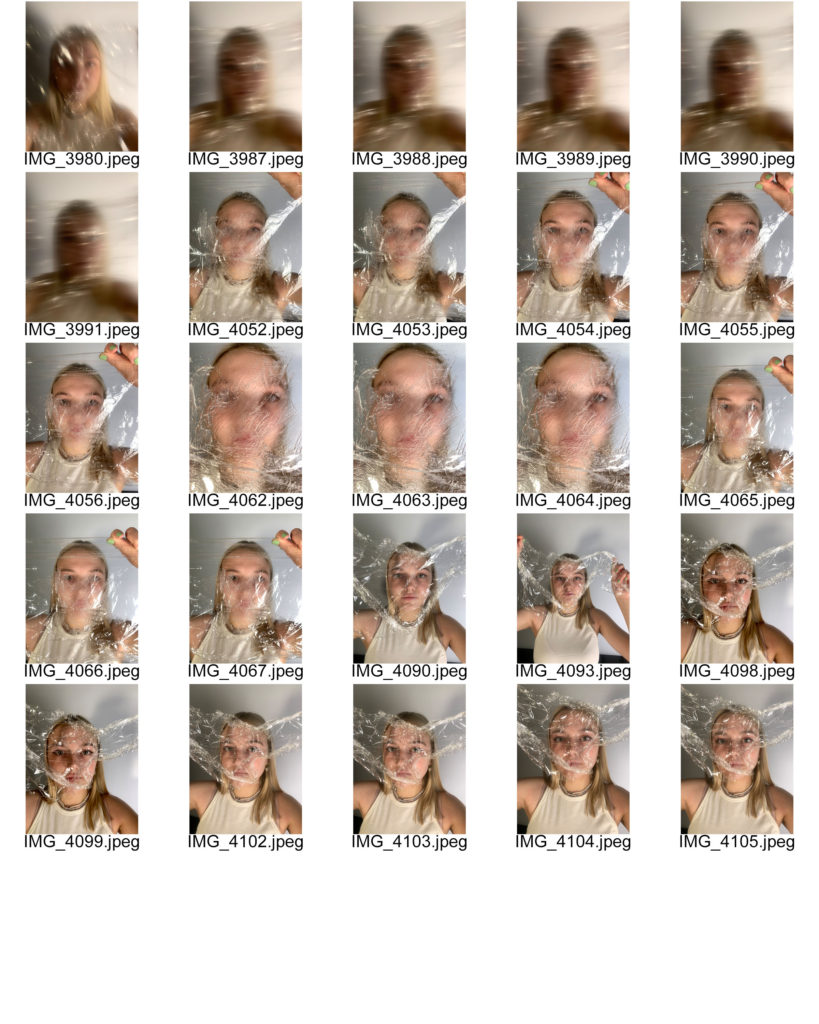
Editing my images:
First I selected my best images from the shoot and put them into a separate folder so I could focus on a few of the best images.

I started by cropping all my images to get rid of background that wasn’t needed to make the image more smart and effective. I did this to all my final images.c
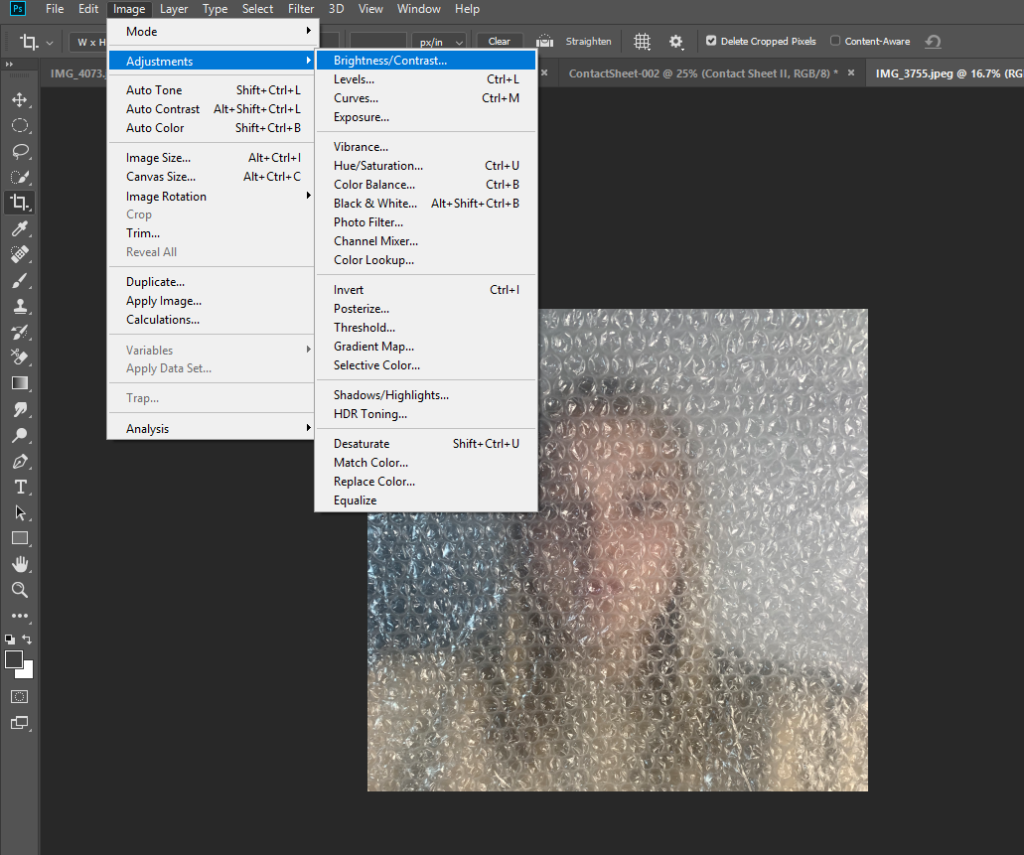
I then changed the brightness and contrast on my images as they were all quite bright from the artificial lighting. I lowered the brightness and altered the contrast to create the look I wanted.

I then changed the vibrance of the image to create a more yellow tone to the image to suite some of Darian Mederos images. This left me with my final image.
I wanted all my images to be close up images and so I had to crop my images quite a bit in order to achieve this.
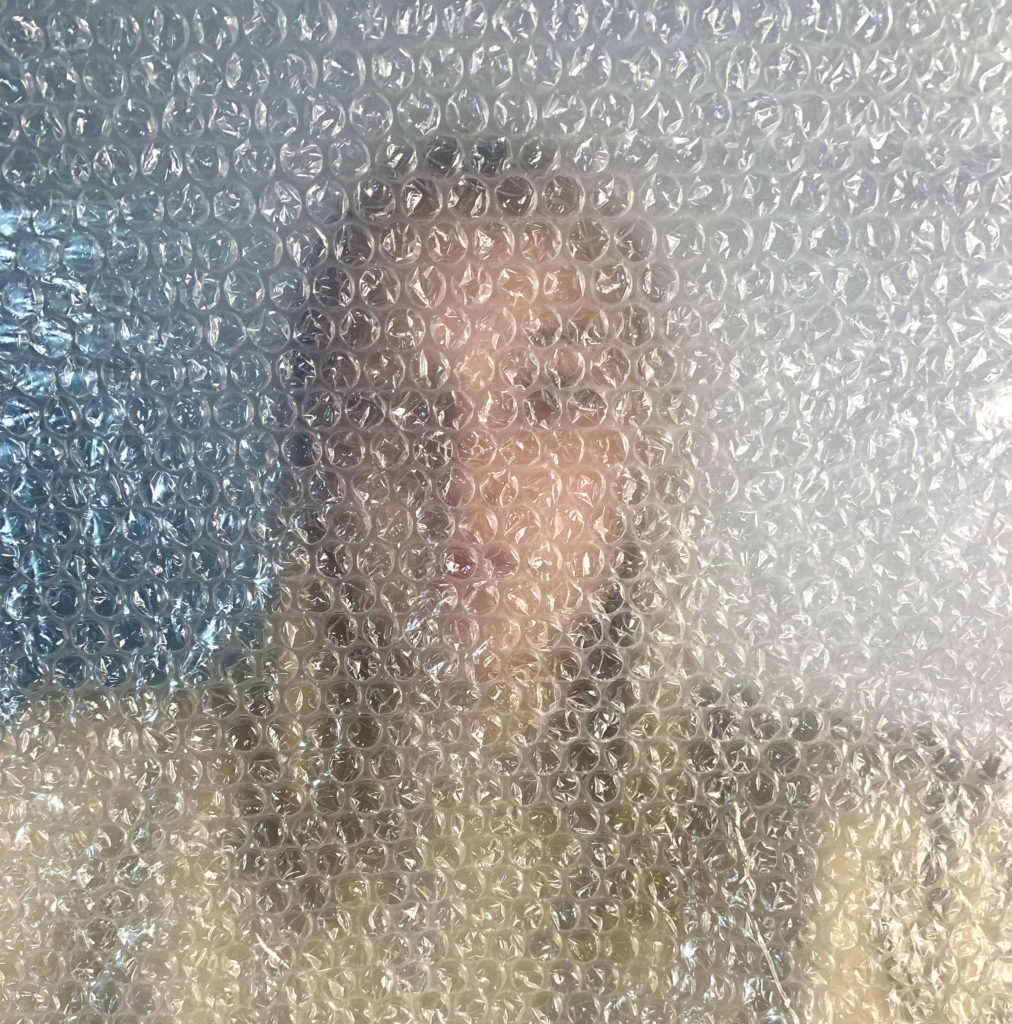

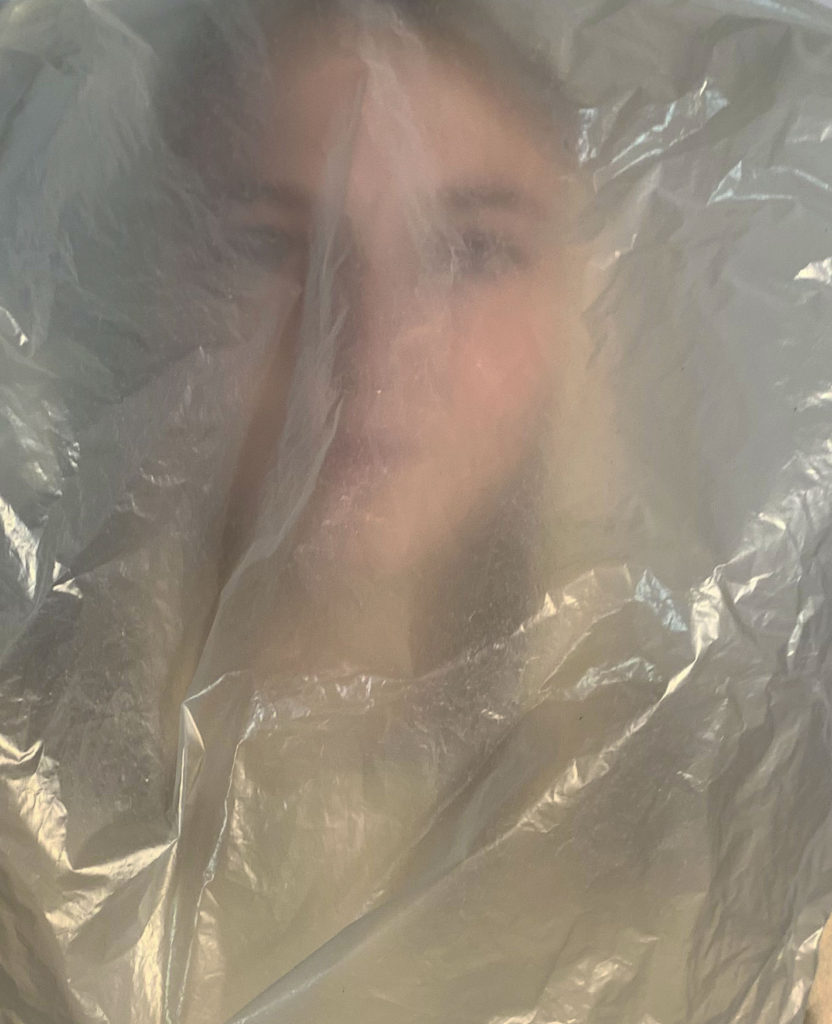

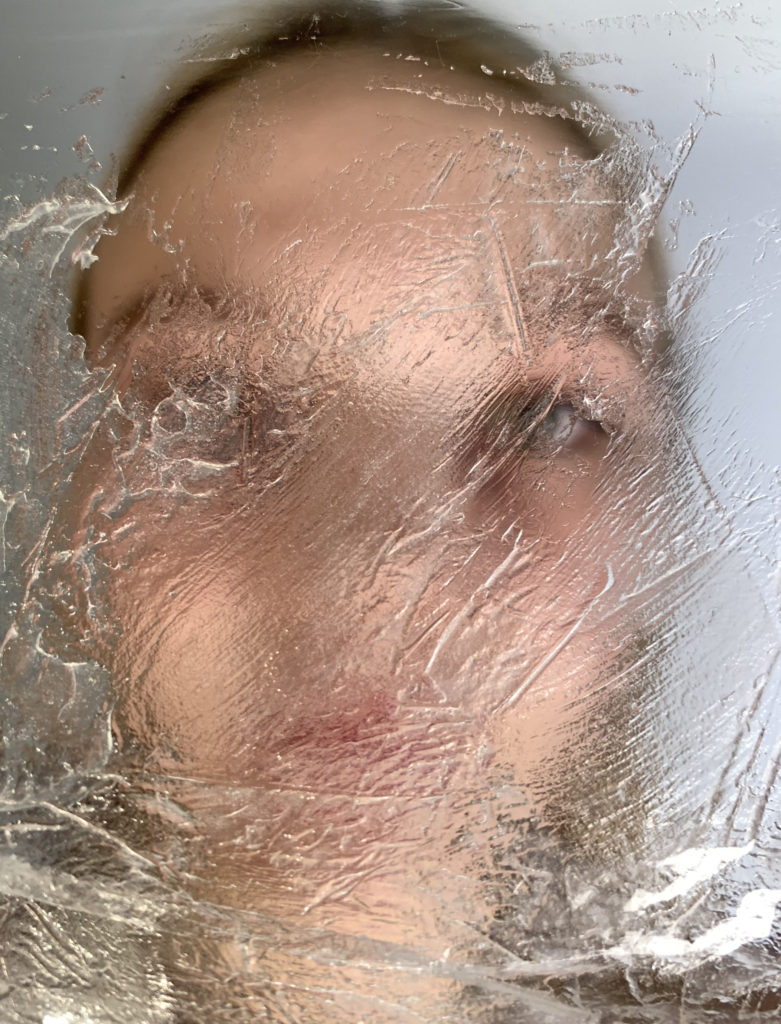
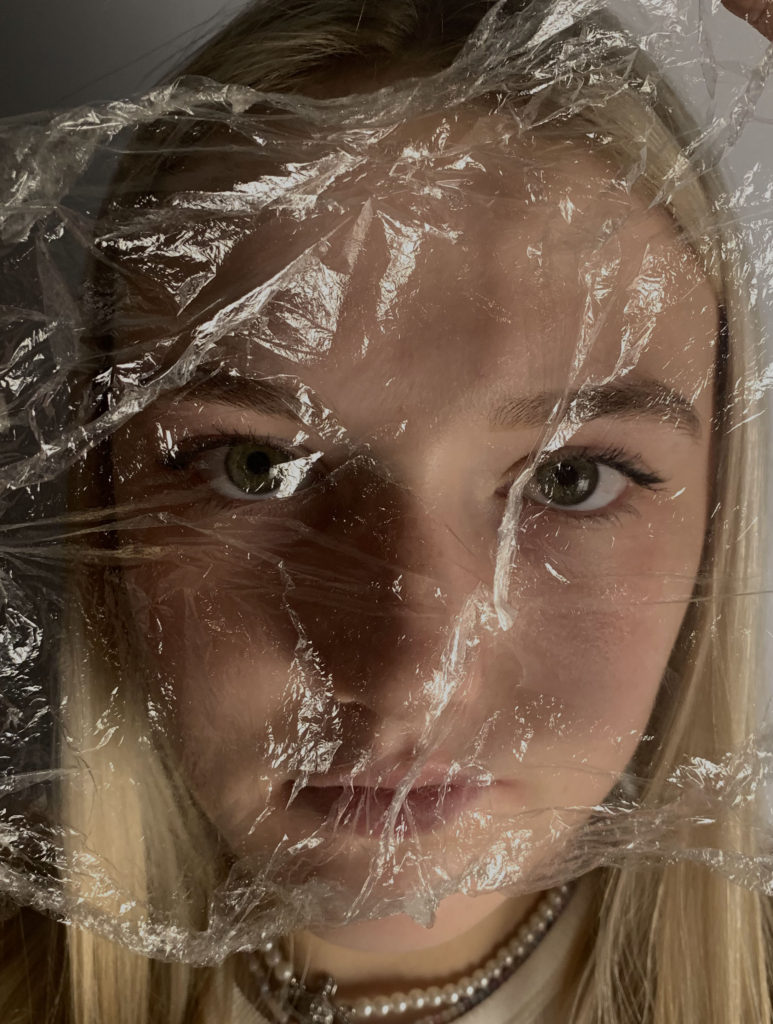
I like the outcome of my images as I feel they represent my artists approach well and you can see a clear similarity between my images and the artists.
I wanted to represent the plastic wastage in these images by using plastic objects as props in my images. I used plastic waste to distort the models face in order to represent the idea that the earth may look incorrect or different due to the damage plastic has done to the earth. I feel i represented this well in my images as the bubble wrap creates a blurred effect meaning you cant properly see the models face and relates to Darian Mederos images. I also used a plastic bag over the models face to represent all the animals that are trapped or injured by plastic that is polluting the seas and their habitats. I chose to put the bag over her head to represent her being trapped and the ingestion of plastic by animals. I also used cling film and folded the cling film to create dents to distort and change the models face, I also put vaseline onto the cling film to make it looked blurred.
Nick Fancher
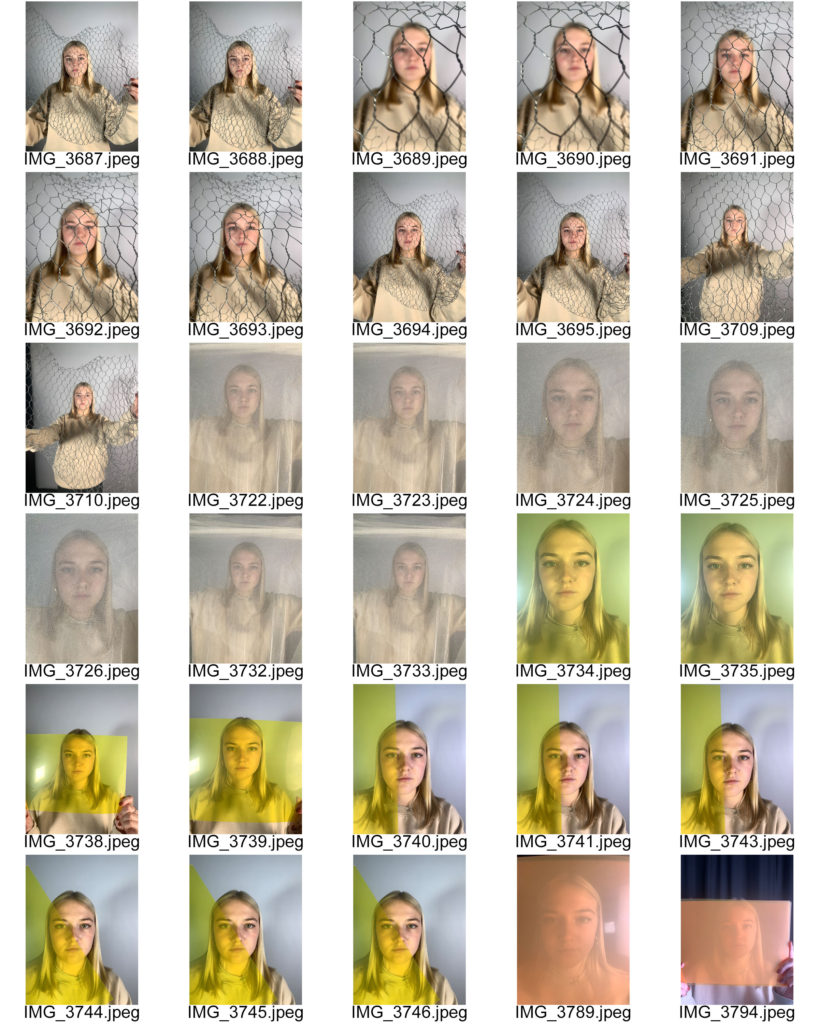
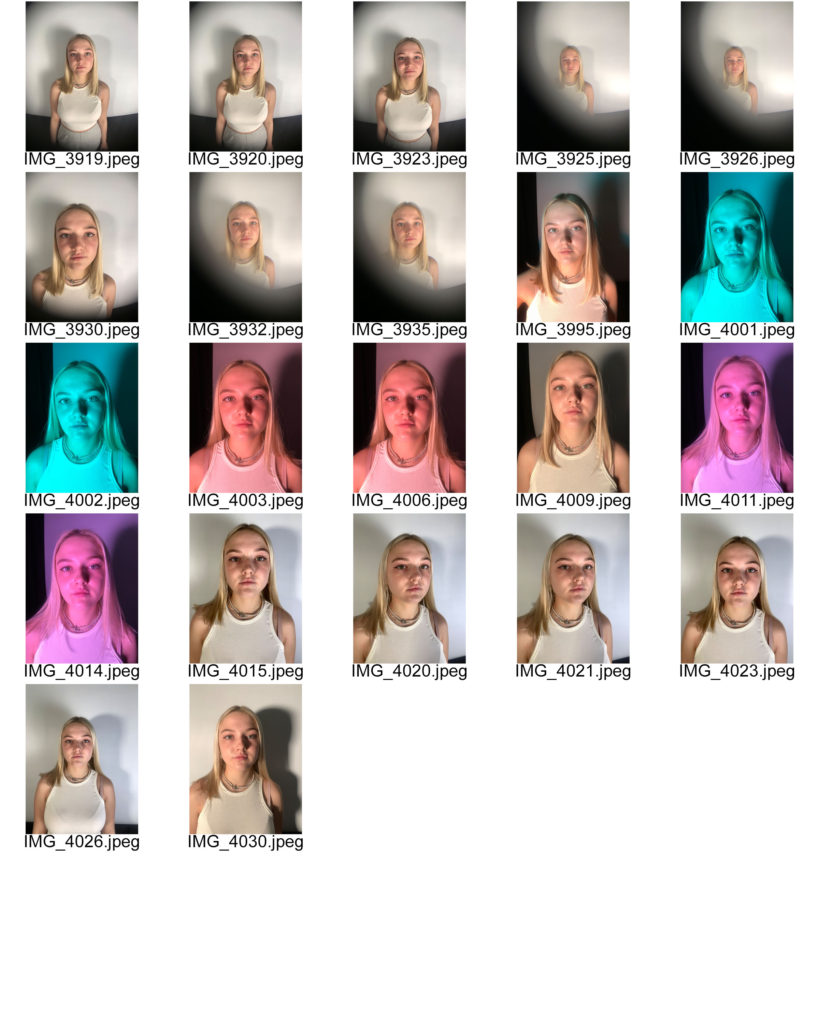
I used mainy different editing techniques for this shoot. For my colourful images I:
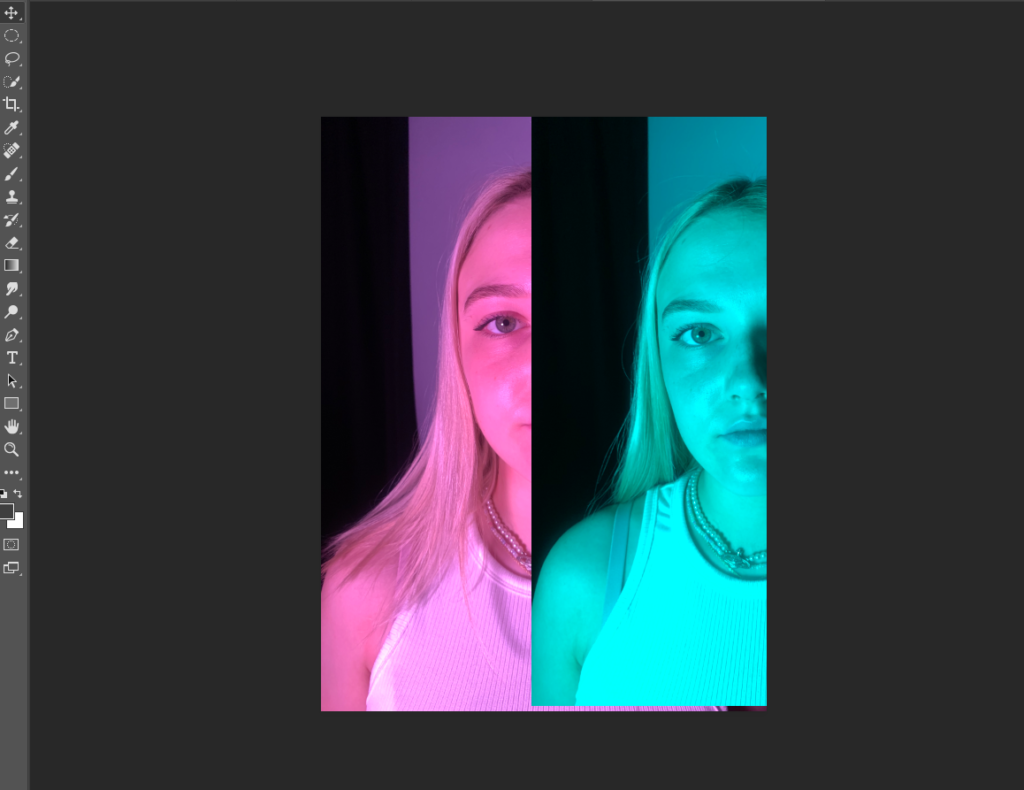
I started by overlapping the 2 images and made them fit ontop of each other perfectly.
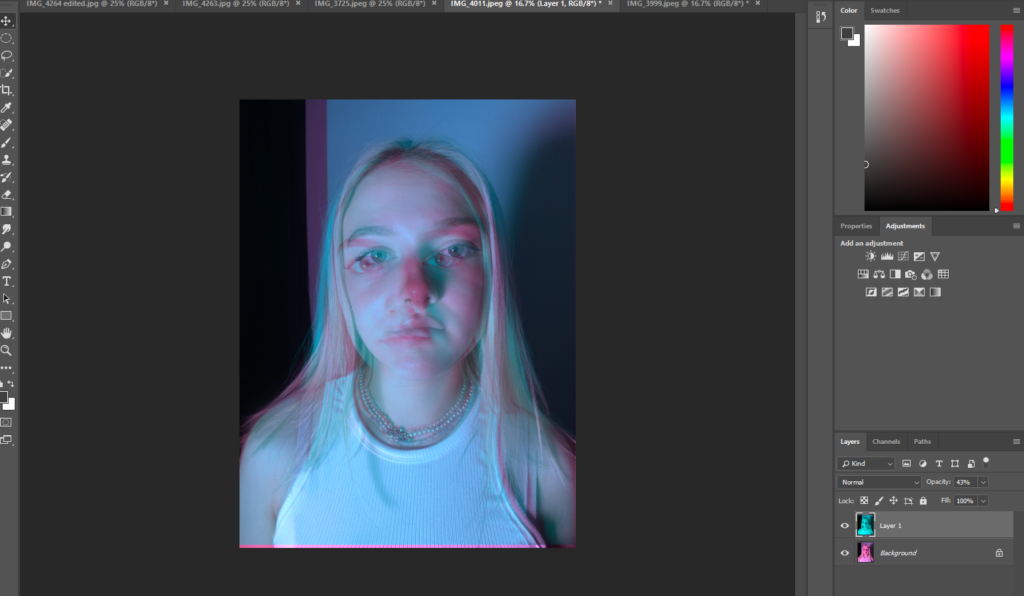
I then changed the opacity and experimented with it to find the perfect level to create the image I wanted.
I also put most of my images into black and white and changed the exposure and brightness on all images to create the right feeling from the image.
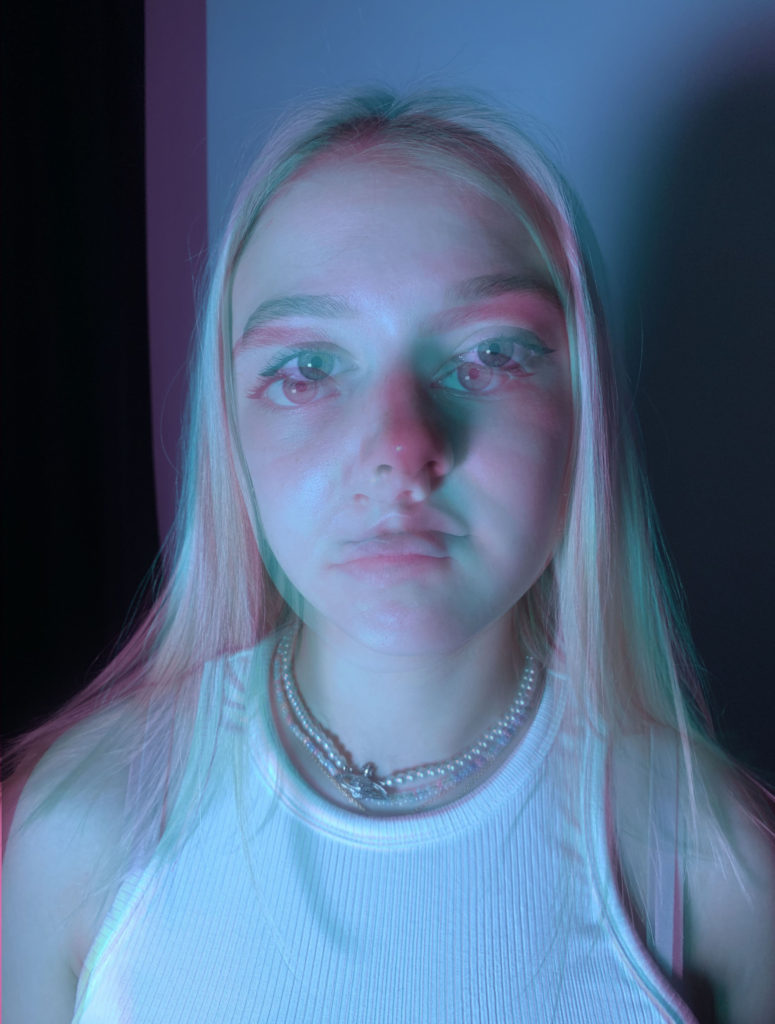
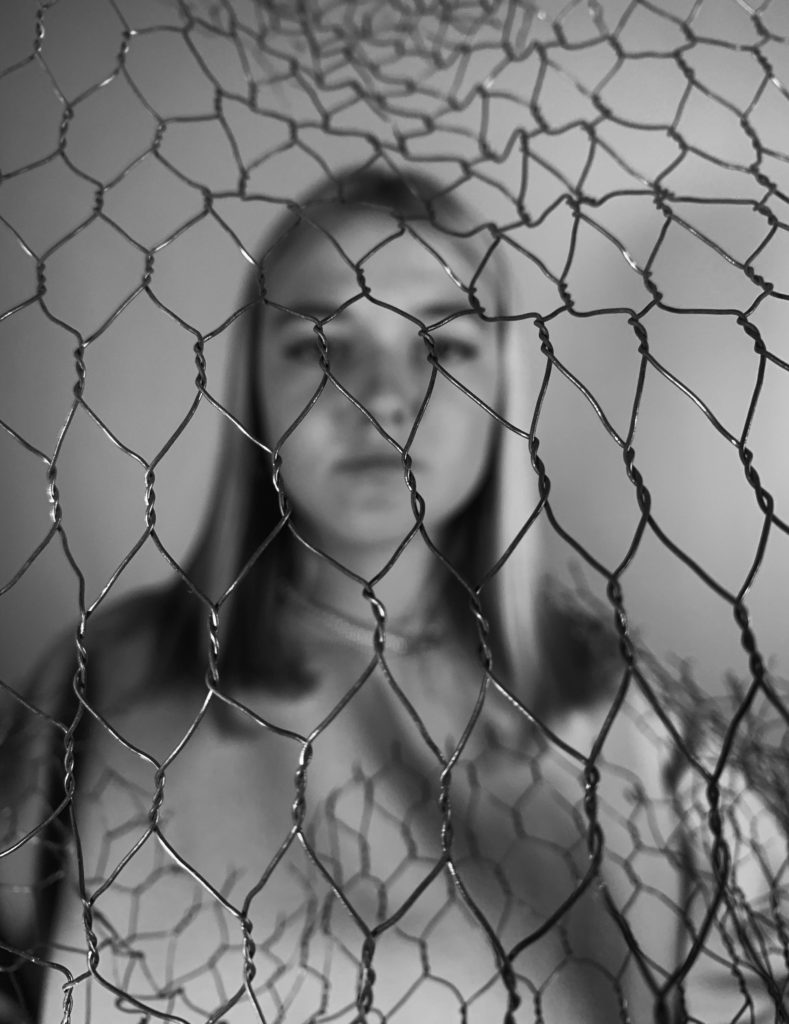
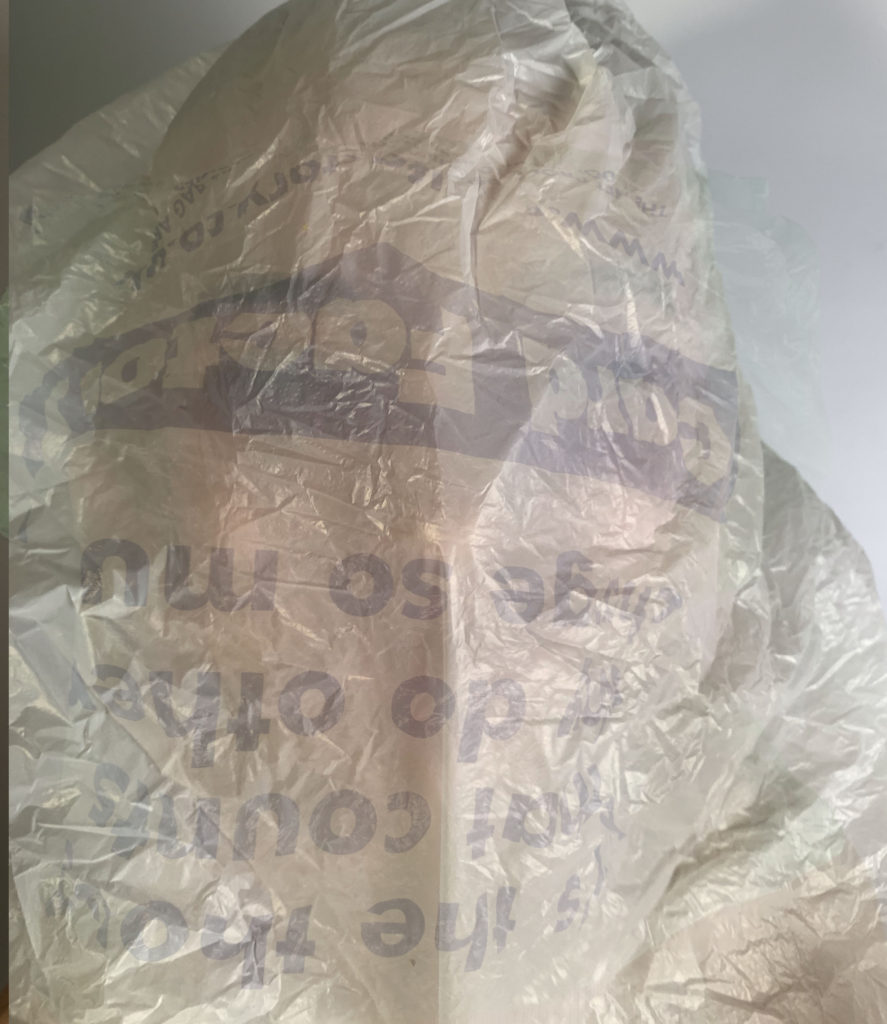


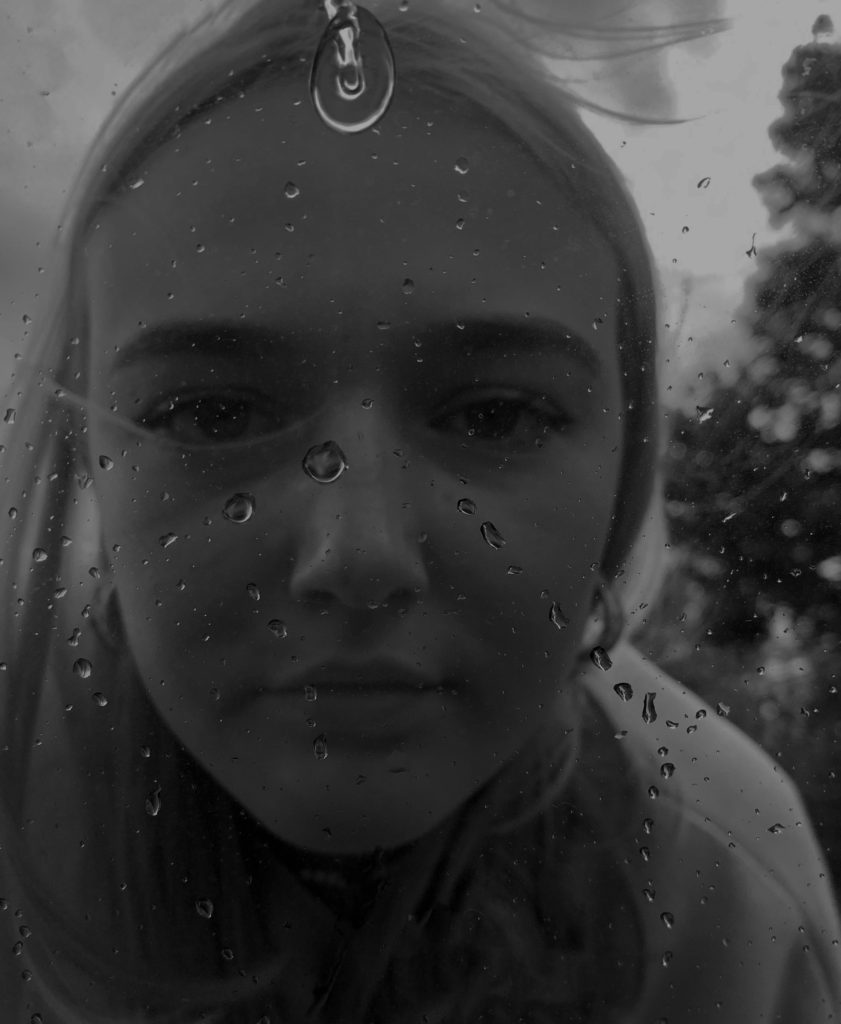
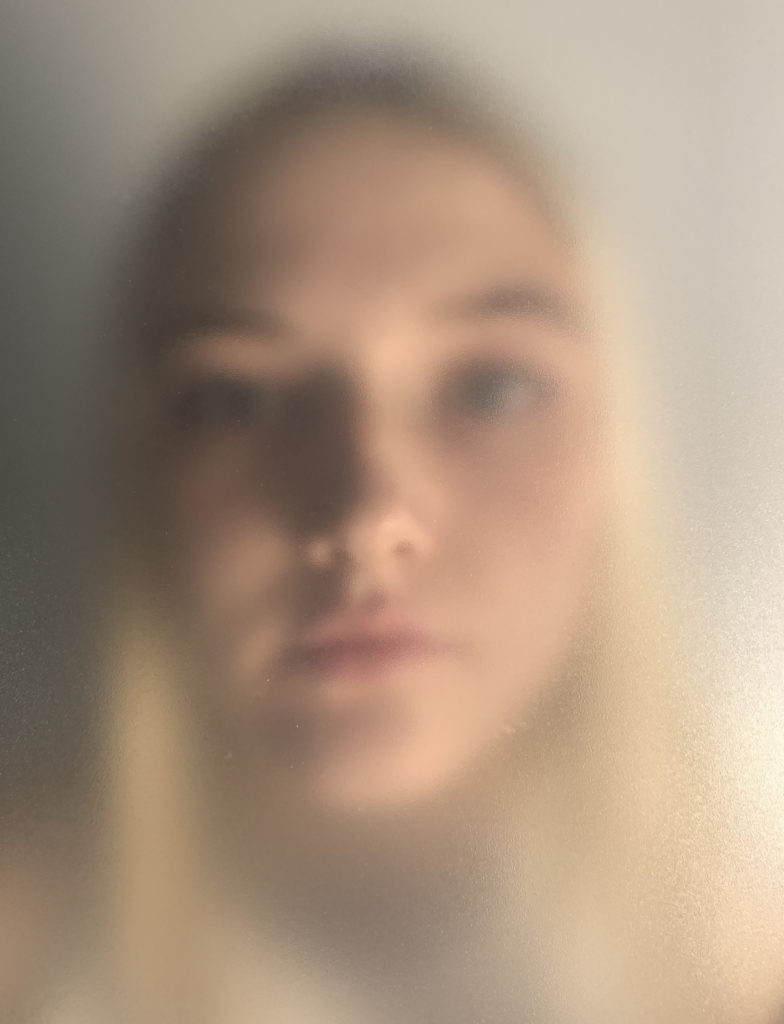
I used water in a few of my images to represent purity and sometimes a lack of access to water. Pure water is so important to reduces the risk of contamination of diseases and it is important when cleaning utensils and everyday items and especially important for a basic action such as washing your hands. An estimated 2.2 billion people need access to safe drinking water, including 884 million currently without basic drinking water service, this means these people do not have easy access to fresh , clean water and face the risk of catching deadly diseases everyday just from a daily necessity. Unsafe water is one of the world’s largest health and environmental problems particularly for the poorest in the world which relates to social class. Woman and young children must carry buckets full of water every few days and sometimes everyday and walk for miles carrying the heavy buckets of fresh water. In regions where freshwater must be retrieved from sources outside the home, the burden of fetching and carrying water largely falls on women. Therefore I wanted to use water in some of my images to represent this as it relates to Anthropocene as humans have caused this lack of access to water.
I also chose to use barbed wire and use the holes to look through to the model to divide up the face and also to make it look like she is trapped in the wire which is what happens to the sea animals from all the waste that goes into the sea.
Hendrik Kerstens and Vika Pobeda

Initially I wasn’t happy with the outcome of this shoot so I decided to try some editing techniques to change my images to fit my aim and represent Anthropocene more.
Therefore, for all my images in this shoot I chose to use multi exposure.
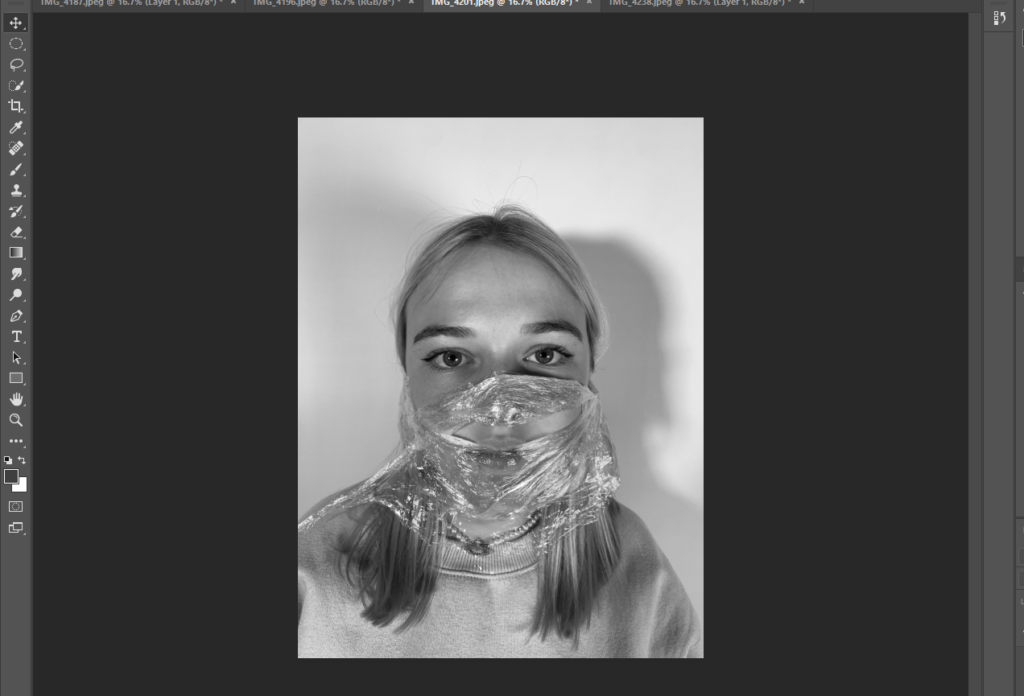
I put some of the images into black and white to add more effect and improve the image , I then overlapped the images.

Then I changed the opacity to the right opacity for the image I wanted to create.
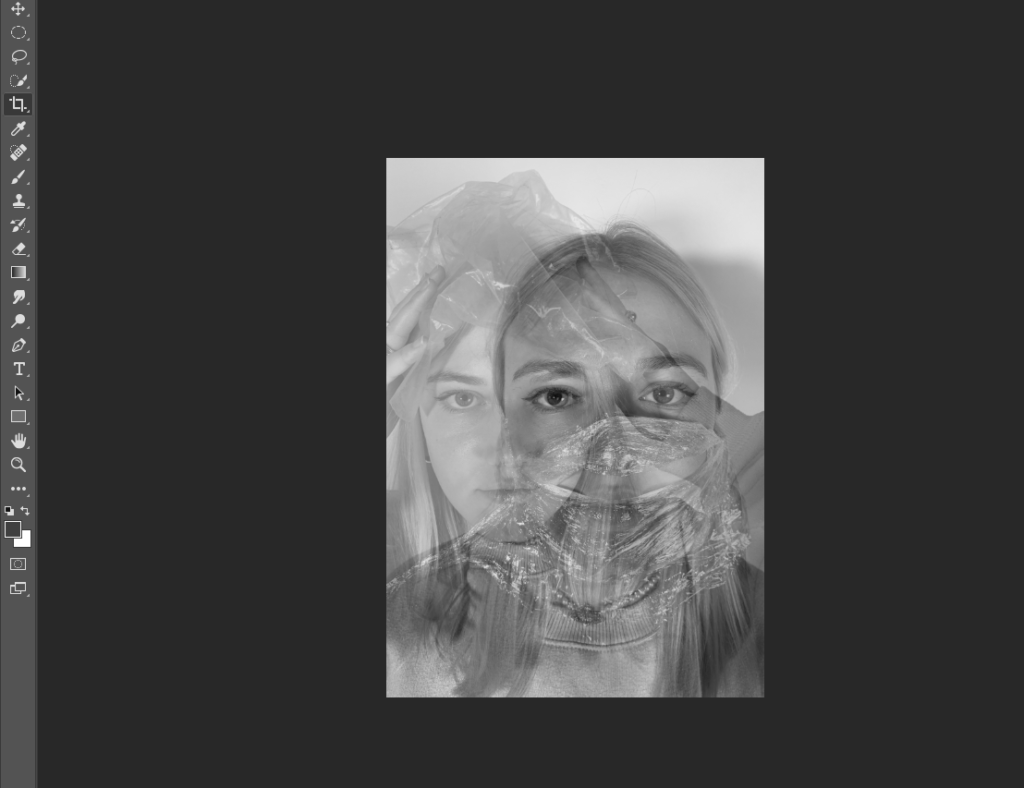
I then cropped down the image to create the final image that I was happy with.
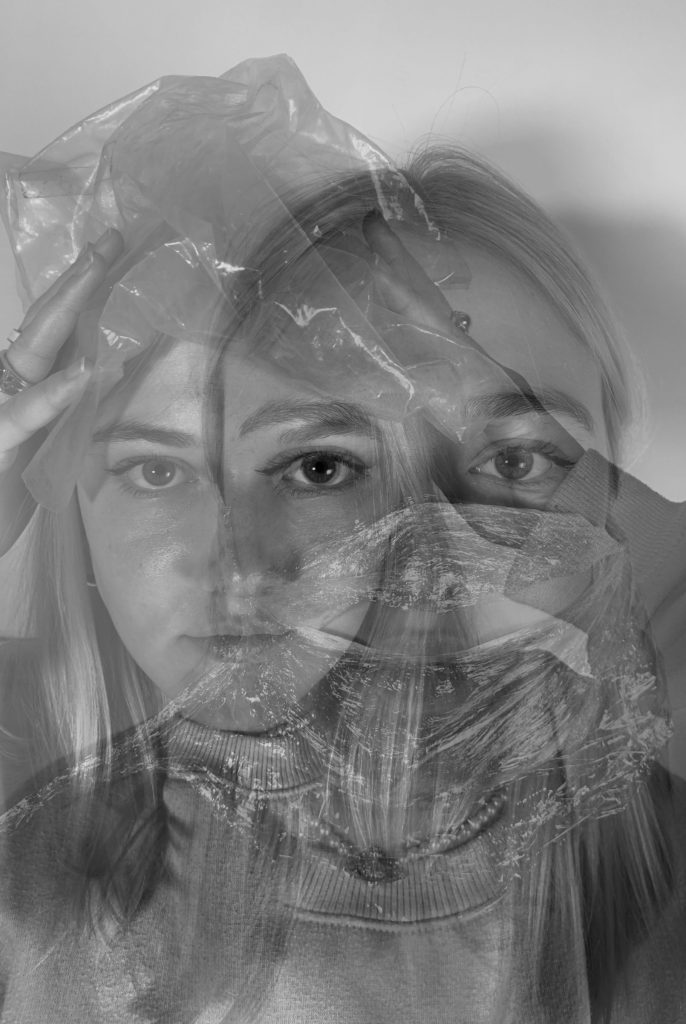
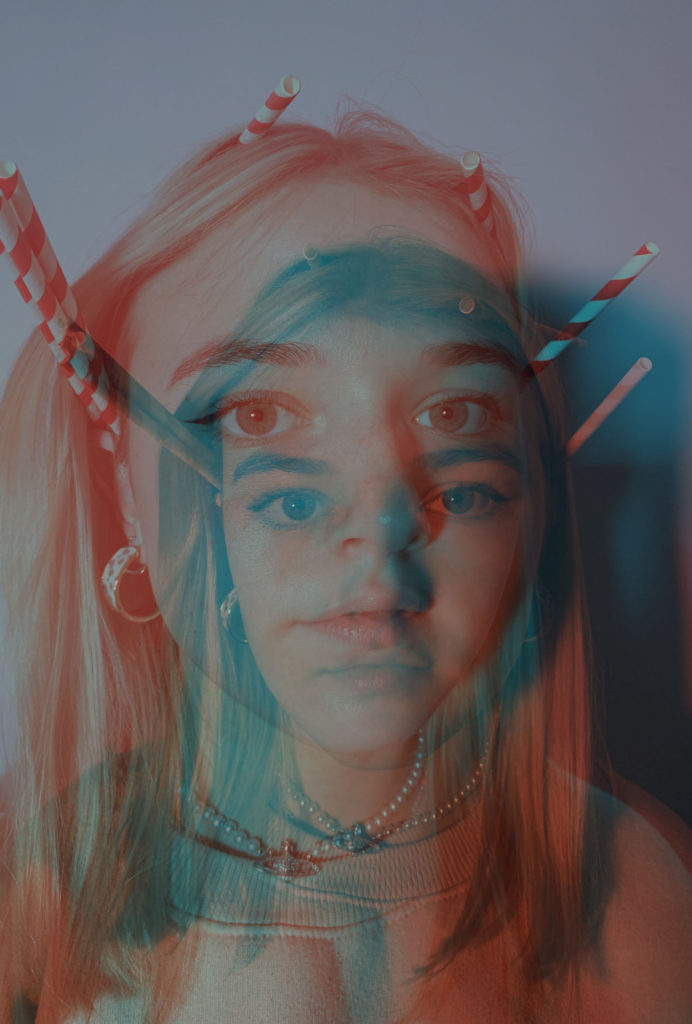
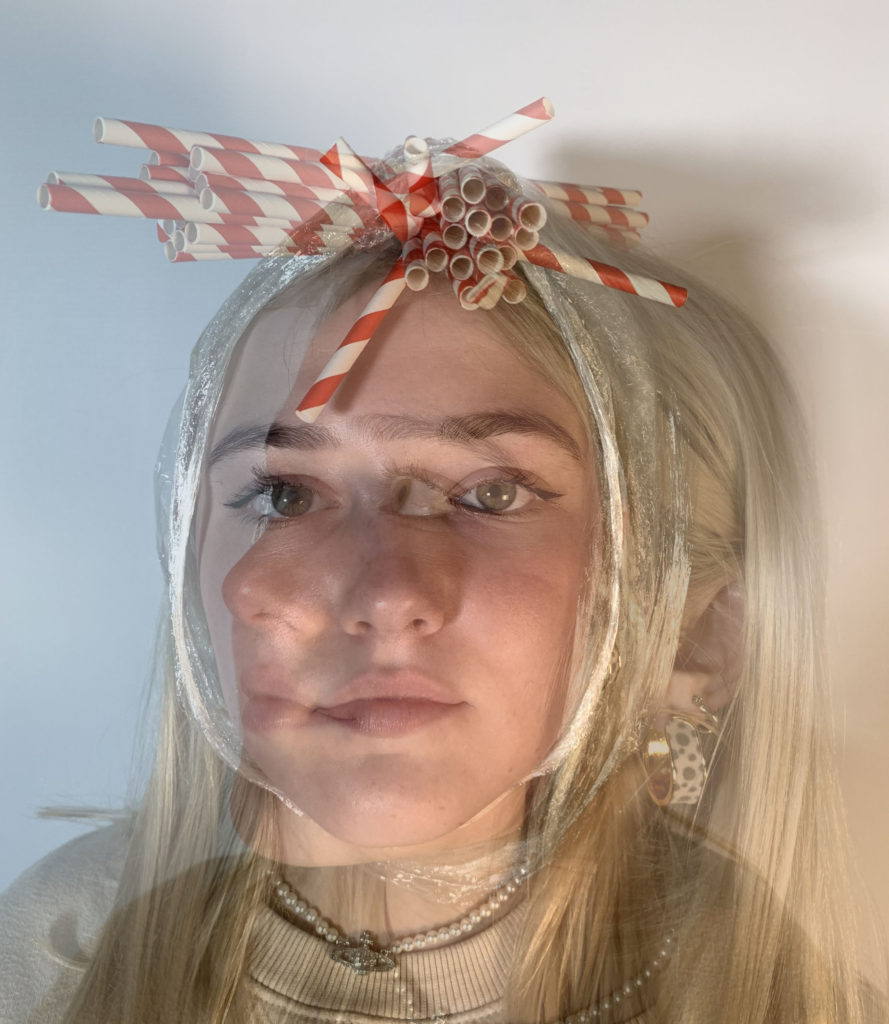
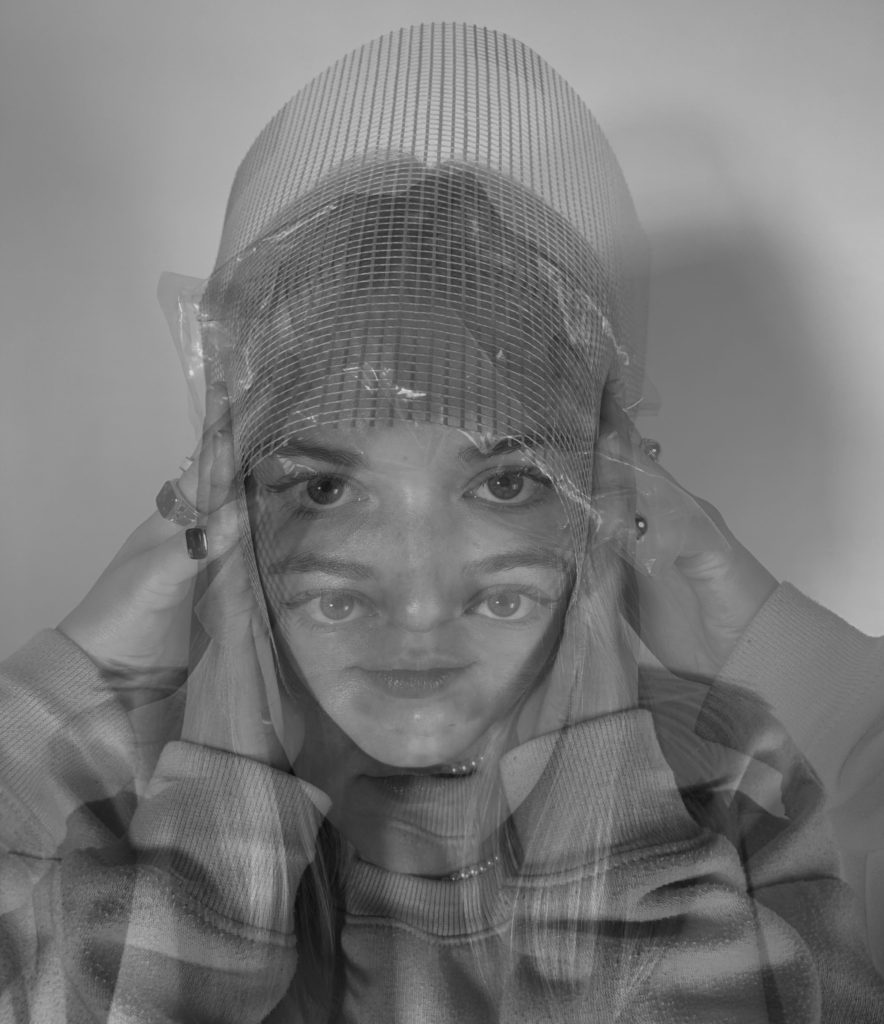
I chose to use the multi exposure technique for these images to create a confused and overwhelming look for the viewers.
To create these images I used multiple types of waste that is typically found in the ocean and caused injury to animals whether that be the animal trapped in a plastic bag or a turtle getting a plastic straw stuck in their throat. On a boat off Costa Rica, a biologist had to use pliers from a Swiss army knife to try to extract a plastic straw from a sea turtle’s nostril. The turtle squirmed in agony, whilst bleeding profusely. Around 700 species of marine animals have been reported—so far—to have eaten or become entangled in plastic.

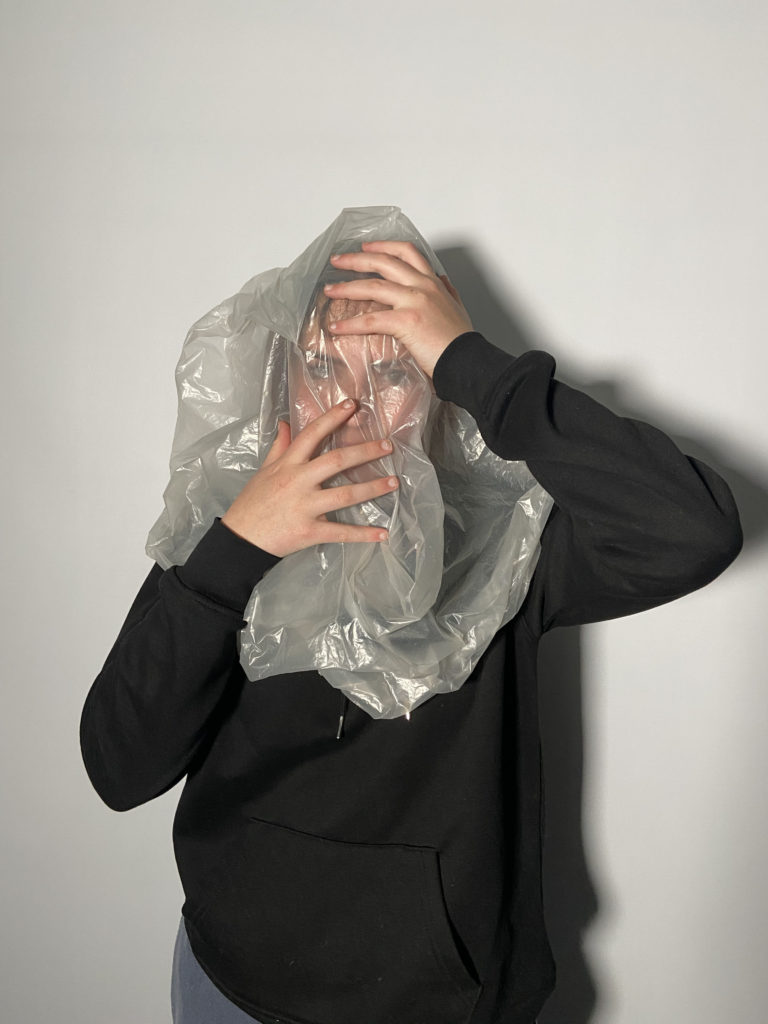
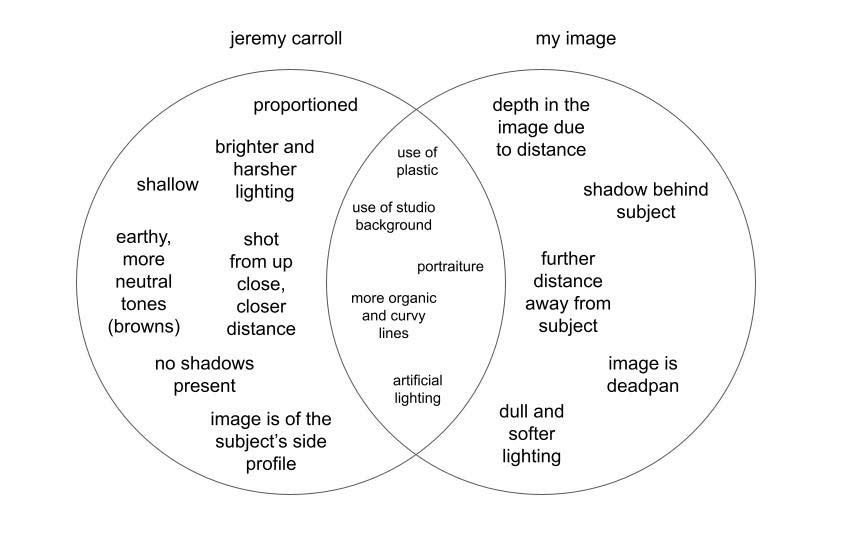
For my second photoshoot under the stimulus of Anthropocene, I have taken inspiration from Naomi White and Barry Rosenthal. I chose these two artists because their work is very stirring, as it addresses the vast amount of plastic objects in the oceans, such as plastic bottles, children’s toys, hair combs, and flip flops.




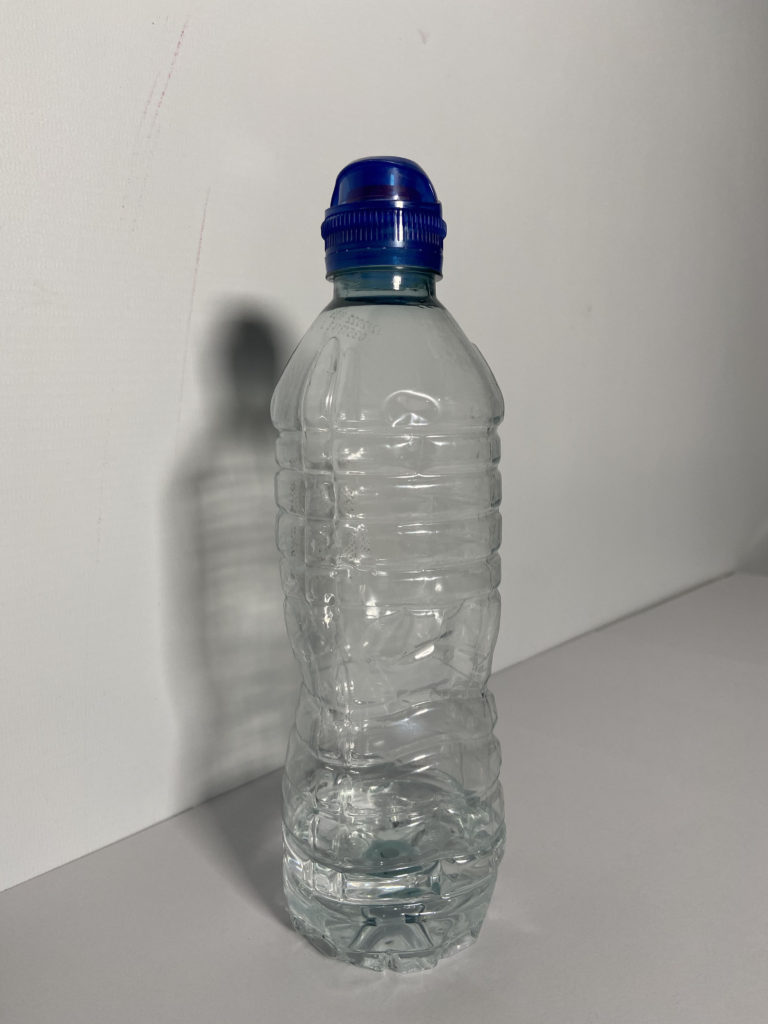
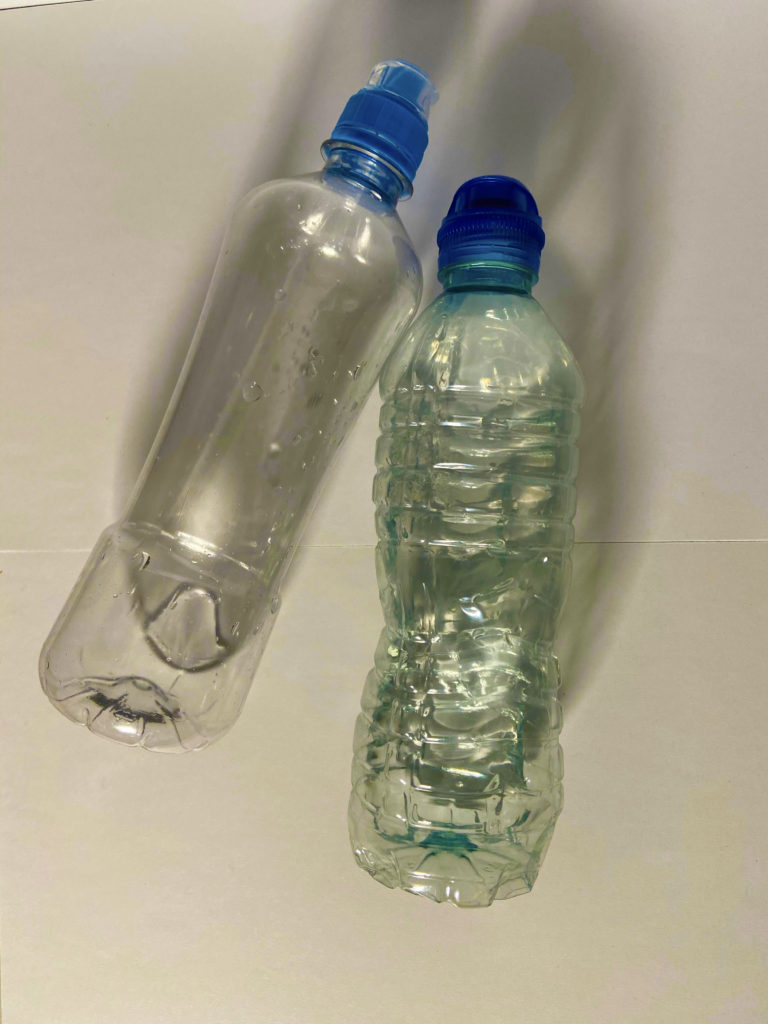
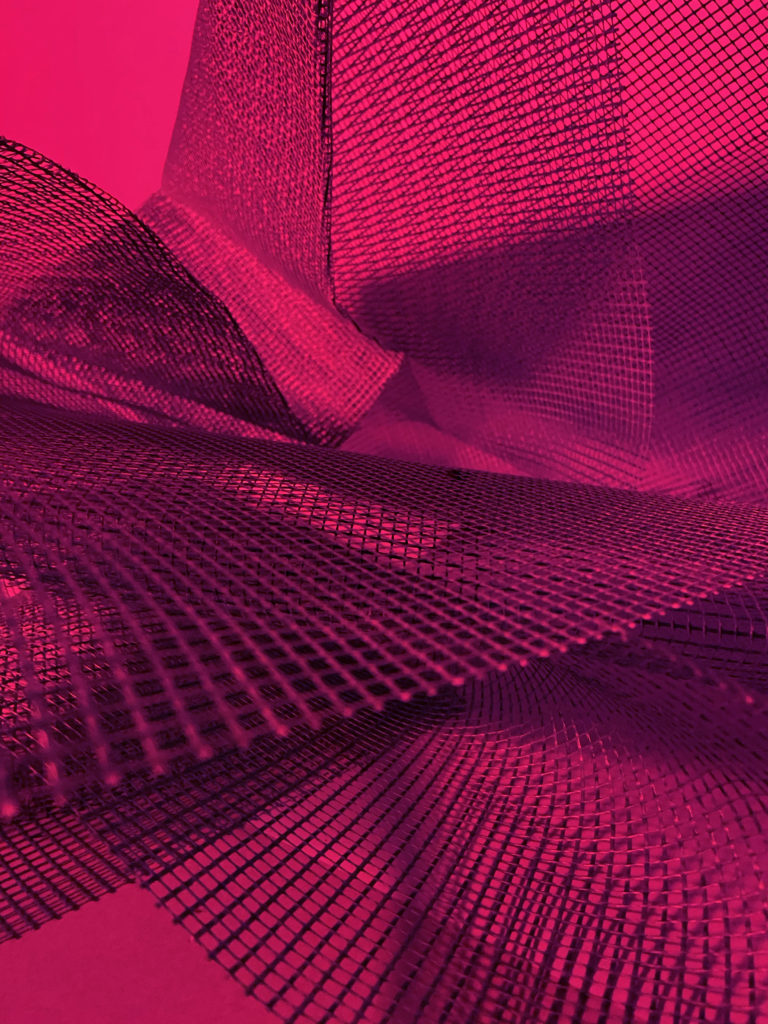

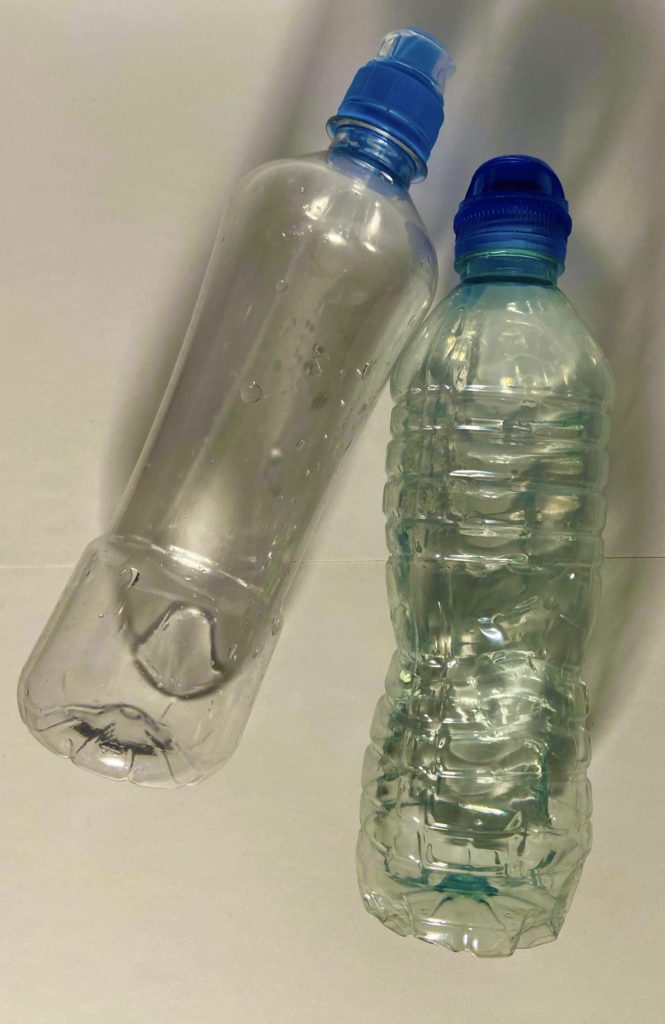
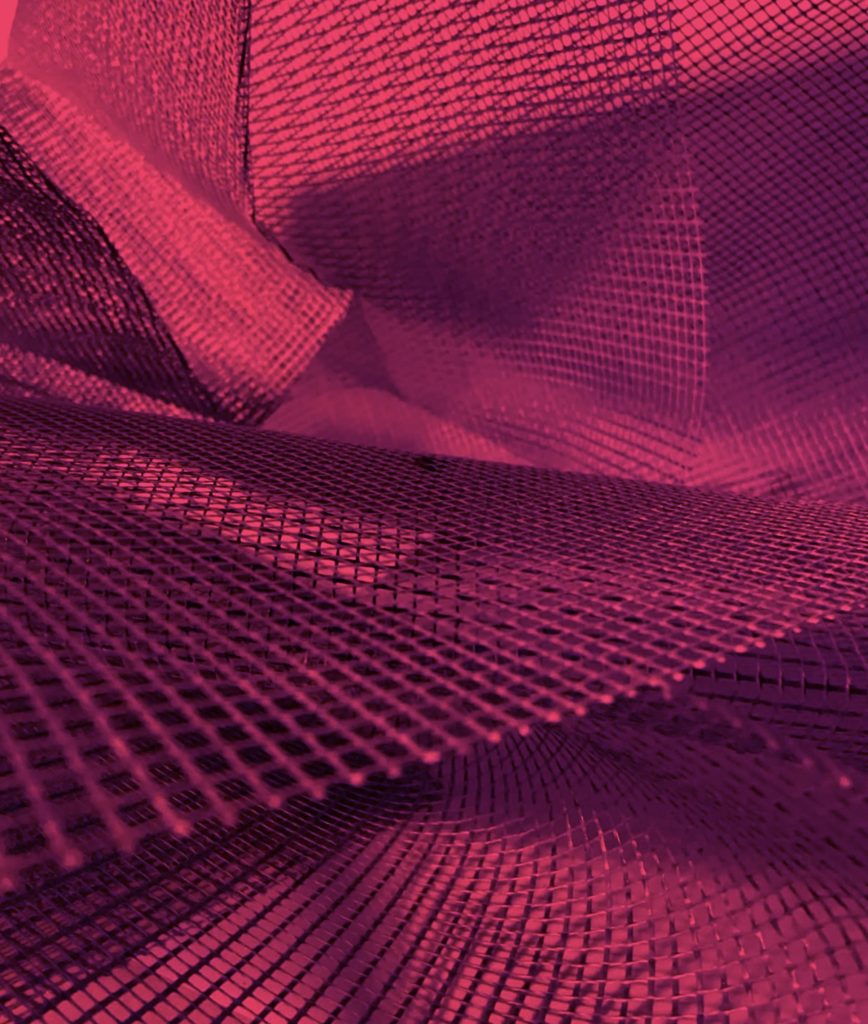
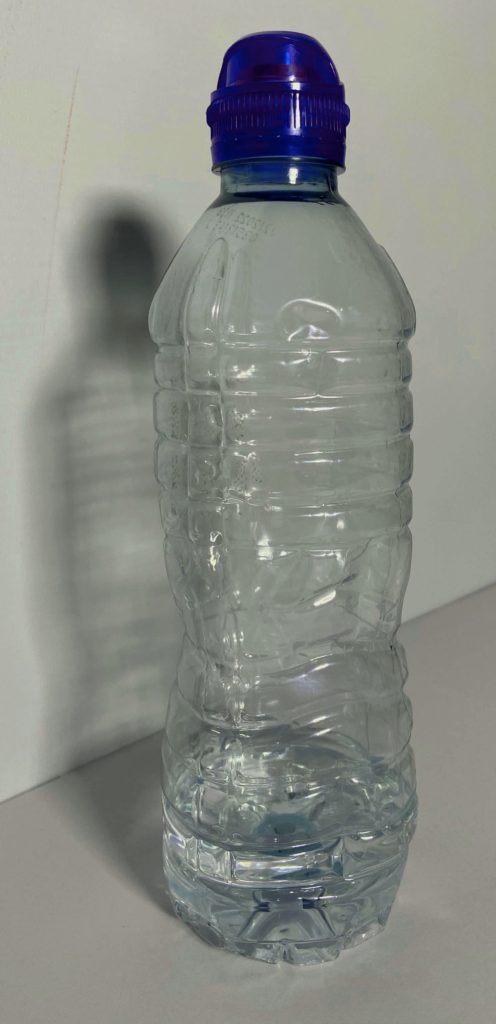
Final images
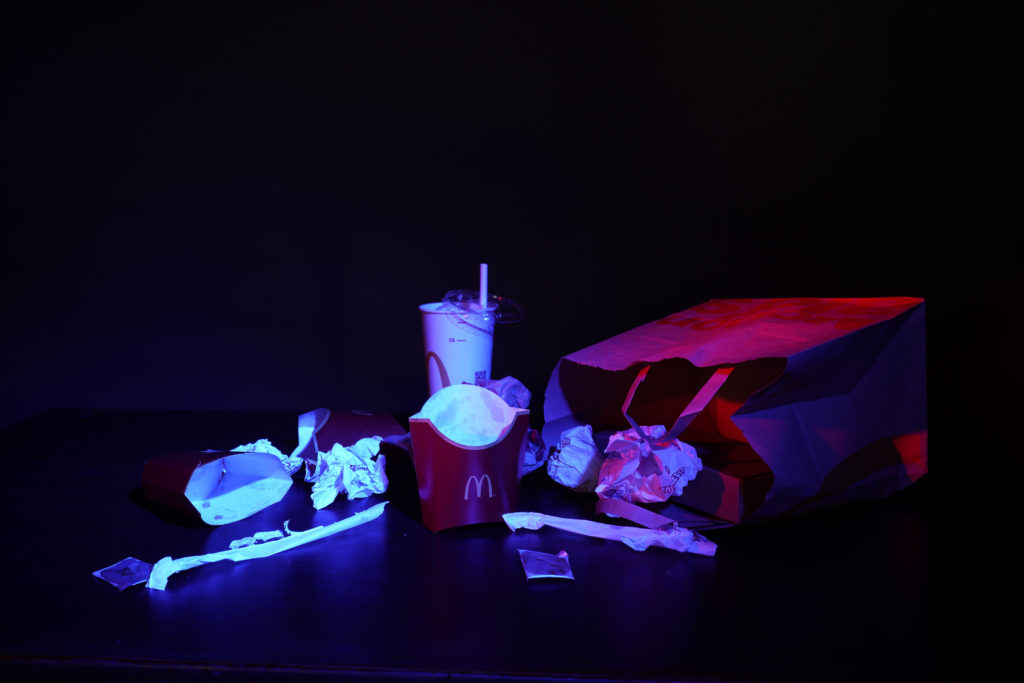
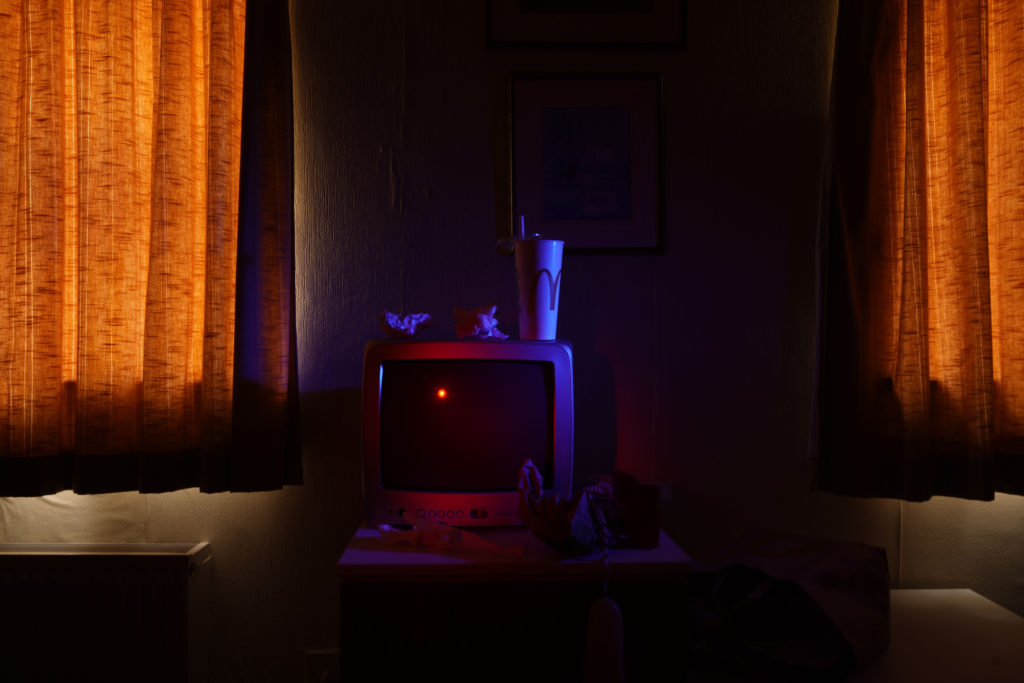
To recreate Troy Paiva’s style I used two continuous lights and added a grid and coloured gels to them. The grid allowed me to narrow the light so that it only lights specific part of the objects I wanted. The colours gels allowed me to add contrasting warm and cool colours just like Troy Paiva does. The camera was set to a very slow shutter speed of between 30 seconds and 8 seconds of exposure time. Since we where shooting in the dark this permitted some ambient light to get sucked in to the exposure. As I moved from the location to location, I had to change the shutter speed to adapt to the ambient environment and in some shots I decided to use flash light rather than continuous light. This helped to isolate the subjects. Off course the camera was always on a tripod. This is very important for slow exposures.
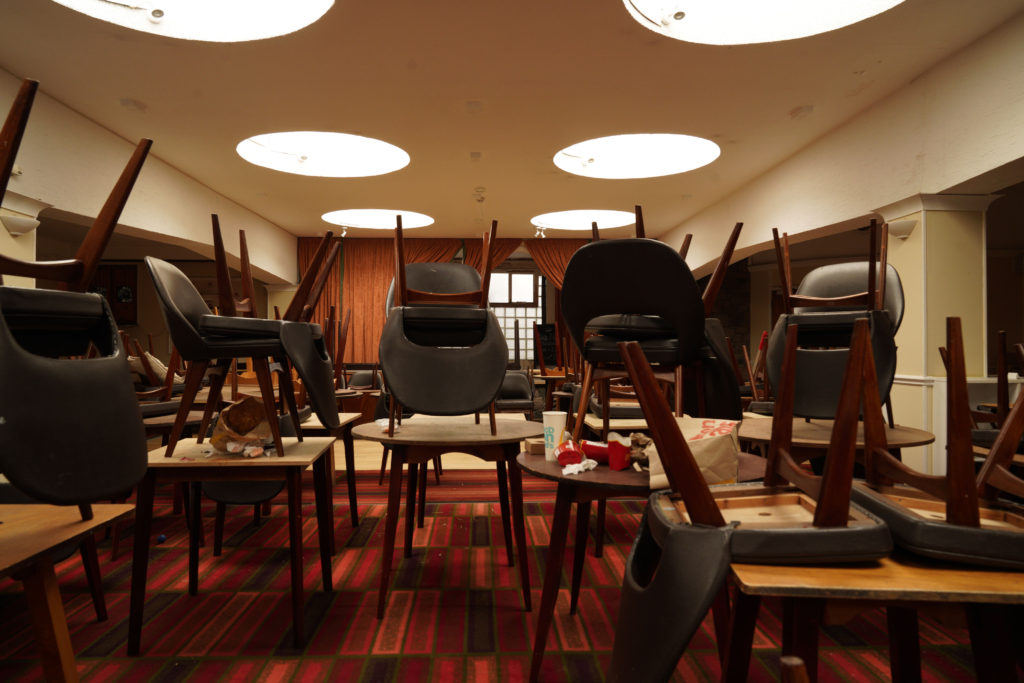
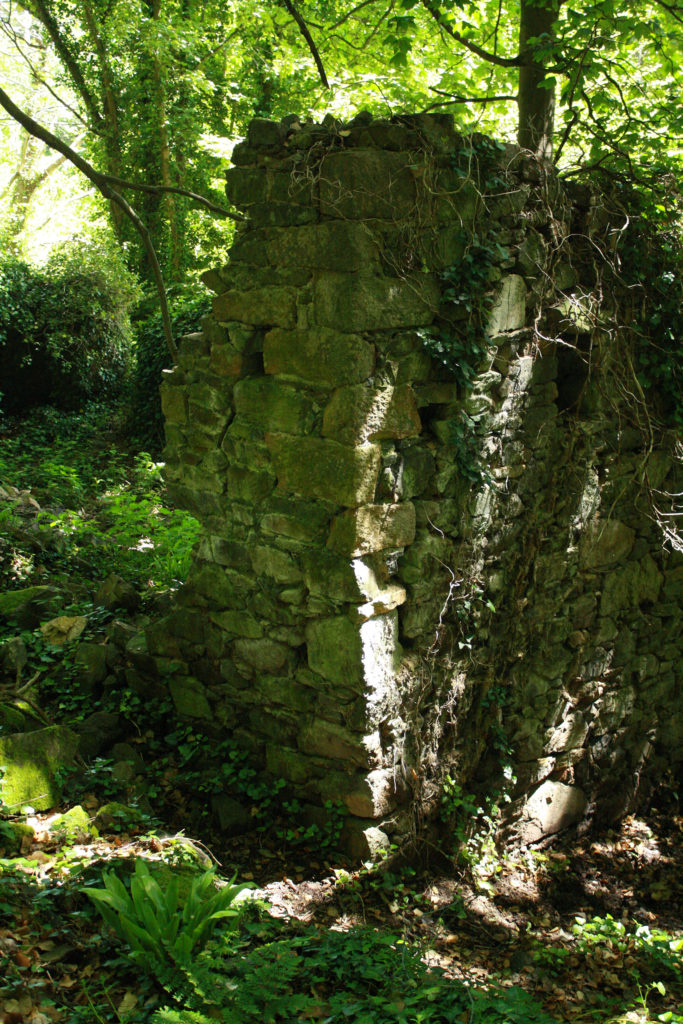

photo that I chose:
The three first pictures are from the same shoot ”Domestic waste”. Each of those three pictures presents different waste. The image I especially like is the first one the ”McDonalds rubbish” because it makes you question how something that is loved by young, old people can be very bad for the environment and pollutes our planet. Those packaging can be found everywhere like on street floors or the beach … But what if we took the packaging of our favourite fast food and turned it into an inspiration from a 17th century painting. Is like what Mat Collishaw or Krista van der Niet does. Let’s convert our waste into art!
The second picture I especially like is the third one since
we can see a place that use to be used, now completely abandoned. The colours and patterns of the floors let us guess from what period the hotel was. We can see the unused chairs left on the tables, rubbish everywhere the carpet is dirty… and all this makes me think about what this room was for before, why is it no longer used. The only thing left now are the memories. The last two photos are from my second shoot ”Ingrained in nature”. This shoot had a different meaning for me since I wanted to represent the fight that nature must wage against an anthropogenic element, in the end nature tries to adapt to it and grows up despite everything. The building is hidden in nature,
and its colours are the same as the forest: brown, green, yellow, blue
Review and Reflection
I like the finals results of my photos I think I managed to interpret what I wanted to show. In the first controlled conditions I did, I was a bit disappointed because I didn’t focus on little details because I was not well organized in terms of time. But in this controlled conditions I got better organized and I managed to put the details I wanted like well place the objects, change them, transform them and I also explored more in my idea than the last time. Another thing I had to improve in my last controlled conditions was lighting and sincerely I think it’s something that I handled well in this theme.
This shoot was inspired by Jeremy Caroll. As well as including Caroll’s style I wanted to highlight the topic of air pollution as well as water pollution.
I wanted my images to show the impact that people have on the world. Even by eating something with a plastic wrapper humans are negatively impacting the world and pouring plastic into the oceans.
Water Pollution (plastic)
Plastic is accumulating in the world’s oceans at a staggering rate. An estimated eight million tons of plastic – the equivalent of over 26,600 Boeing 747 planes – are swept into our seas and oceans every single year, mainly via rivers and coastal urban centres.
500 marine species are known to be affected by plastic pollution.
Nurdles – the pre-production pellets from which most plastic items are made – are a significant direct source of microplastic pollution. Because of their small size and the way in which they are transported and handled, millions of these pellets are spilled in factories and other sites every year, and are often washed straight into storm drains and out to sea.

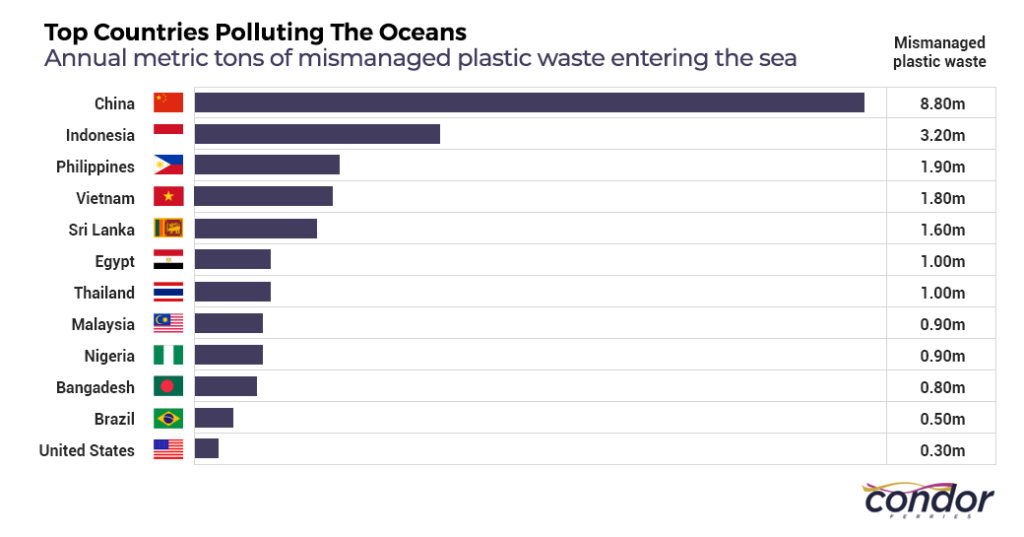
Ocean plastic pollution | Fauna & Flora International (fauna-flora.org)
Air Pollution (smoking)
Unfortunately, the environment is the worst hit by activities of the tobacco and cigarette industry. Until everyone learns to start doing something about this trend, they might be in for some big trouble in the nearest future. This article will focus on some of the negative effects of tobacco on different elements of the environment, as well as steps that must be taken to prevent the looming damage.
The smoking industry is designed by its own processes to harm nature. The kind of land needed to grow tobacco is often not gotten, except by chopping down of trees. Over time, deforestation has cost our environment. And continuing in the process of deforestation will do more harm than good.

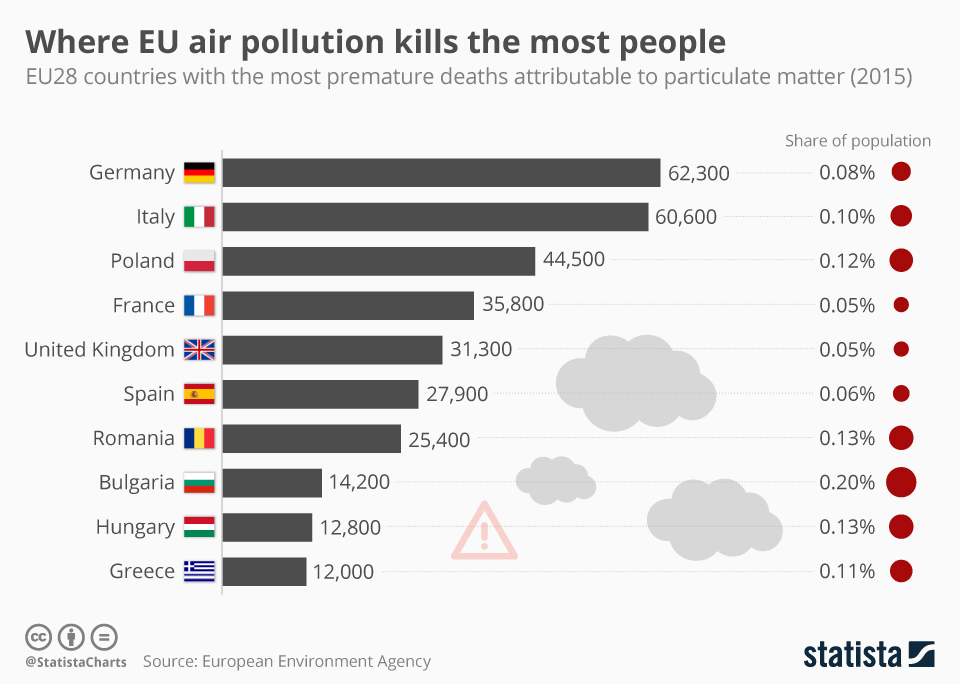
Land Pollution (plastic and global warming)
In 2019 a new report “Plastic and Climate” was published. According to the report, in 2019, production and incineration of plastic will contribute greenhouse gases in the equivalent of 850 million tonnes of carbon dioxide (CO2) to the atmosphere. In current trend, annual emissions from these sources will grow to 1.34 billion tonnes by 2030. By 2050 plastic could emit 56 billion tonnes of greenhouse gas emissions, as much as 14 percent of the earth’s remaining carbon budget.
Plastic pollution on land poses a threat to the plants and animals – including humans who are based on the land. Estimates of the amount of plastic concentration on land are between four and twenty three times that of the ocean. The amount of plastic poised on the land is greater and more concentrated than that in the water.
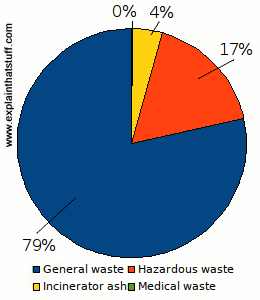
Plan
| WHO | Kiera and Miriam |
| WHAT | Strangled by plastic+vaping |
| WHERE | studio+house |
| WHEN | 05/05/21 |
Contact Sheet

Final Outcomes


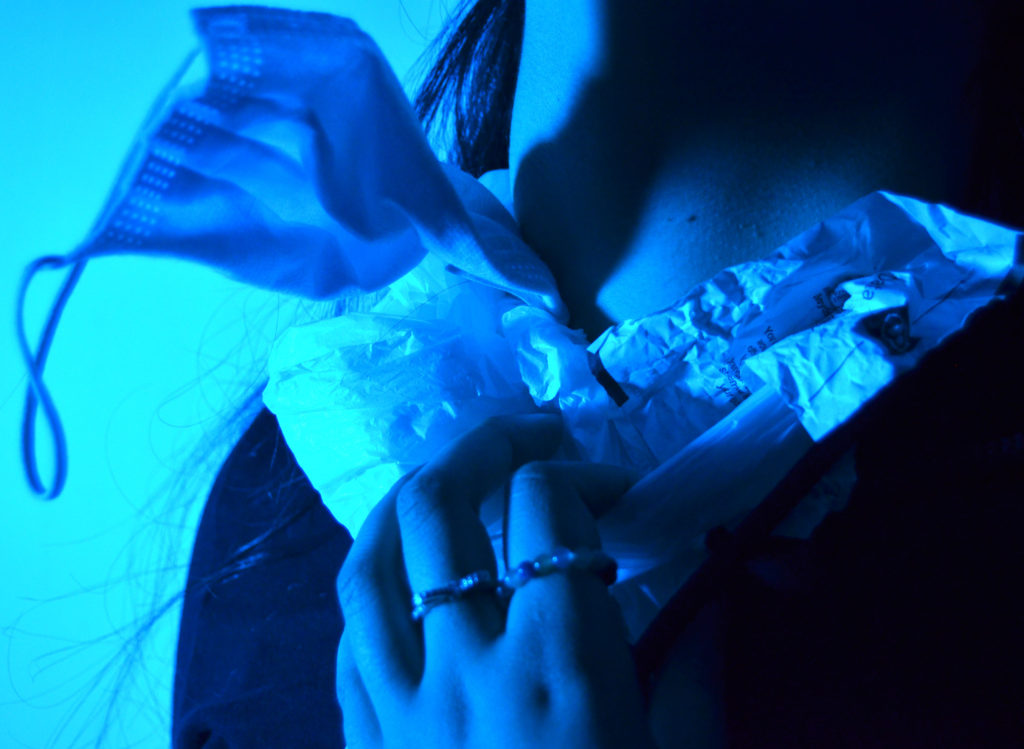





Best Edited Images

For this image I used a blue and green gel on top of my light which was on the highest brightness and had a slight warm tone to help the green shine through however I wanted it to be a cool blue to emphasise the coldness of the ocean and the the fact that humans can be seen as cold hearted since we are so careless with what we do with our rubbish. The blue background also helps emphasise the fact the image is focusing on the treatment of ocean life.
I liked the shadow that the mask created on my model’s neck as it helps represent the deeper parts of the ocean and that plastic effects them as well even though they are hundreds of miles deep. The shadow could also emphasise the fact that millions of creatures are dying due to plastic.
I used a mask in my image to show that the current pandemic has caused lots of damage to the environment. For example, many people have the disposable masks which can easily break, they’re also very light weight and if dropped, can easily float away out of reach and can land anywhere. Even the COVID 19 tests have plastic packaging which is only used once and then binned and destroyed.
I zoomed in to 35 mm on my camera and stood quite close to my model to ensure that her neck, which is getting strangled by rubbish, was the main subject. I wanted my model’s hand to be in the image to show signs of struggle and pain to further show that if humans were in this situation more people would want to help and stop what is going on. I also used a fast shutter speed and got my model to move her head and hands so that I could get a more realistic image.
I like the fact that there are a range of textures in the image. The mask, crumpled bits of paper and the plastic bag all have a harsh look to them which nicely contrasts the smoothness of the model’s neck. I got my model to keep her rings on her fingers to show that it’s not only large bits of plastic that are the problem.
There is a very cool tone to this image which I believe is good to help present the important issue. The blue and black colours in the image link to the saying ‘blue and black’ which is often said when someone got hurt and badly bruised. I feel like the colours in my image are a metaphor of how our world is slowly deteriorating and getting beaten till it will break.

This image was taken to represent air pollution and the damage it does to our bodies. I used red LED lights for my main source of lighting as I wanted the image to be quite dark. I chose the colour red to help emphasise the dangers of smoking and also emphasise the fact that our air is slowly getting polluted by fumes from cars and industrial sites. The thick smoke represents the fact that the air we breath in isn’t clean and we are slowly damaging our bodies.
The smoke is in front of my model’s face to emphasise that we aren’t really seeing what’s happening in the world and that we are normalising things that should be changed. Smoking not only does it damage and kill your lungs, it is also putting a strain on the environment making the trees take in more CO2 and since trees are decreasing in numbers due to deforestation, we are getting less O2 in our atmosphere.
The image is blurred to represent the fact that the world is changing ridiculously quick. The image has quite a smooth texture all together. The smoke, because it’s so thick, helps smooth out the model’s face and when the smoke rises above the model, it looks like its a shadow on the middle of the wall.
The shadow in the bottom right of the image represents the fact that we are slowly beginning to change the the world for the better. It could also however represent the irreversibility of the damage we have done to our planet, and it is looming over us, slowly growing and becoming more and more apparent.
I used a quick shutter speed for this image as I wanted to capture the smoke at different stages so that I could pick the best looking images. Since the smoke is in front of my model’s face, I think that it allows the model to represent the whole world watching its planet get slowly destroyed. The smoke being thick also represents the amount of chemicals that get released into our atmosphere each day.
For this image I zoomed in at 25mm and stood about a metre away from my model which I think was a good decision as I wanted to focus on her face and above so I did a headshot and left quite a large gap above her head to allow the smoke to rise.
The chains around the models neck links to the fact that when you smoke you are slowly damaging your lungs and the chain looks like her airflow is being restricted which is what we as a community are doing to ourselves when we release harmful gases and chemicals into our atmosphere.

I chose this image because I thought that it looked like my model was praying for help whilst they were tied up with rubbish. I wanted my model to represent the struggle the animals go through, however I feel like this image looks like it represents the people who are noticing the damage that the animals are put through and they are pleading for help and for people to notice the harsh reality of what the world looks like.
The green lighting helps this idea of people wanting to help the animals who are in danger. Green is a colour often associated with life and new beginnings. I chose the green lighting to emphasise the fact that even though plastic effects oceanic life quite significantly, land creatures and the land itself gets effected equally as bad.
I asked my model to keep her rings on as I noticed that one of them was made from microplastics which are now known to be even more dangerous for animals as they mistake the plastics for things like small eggs or insects.
Final Analysis
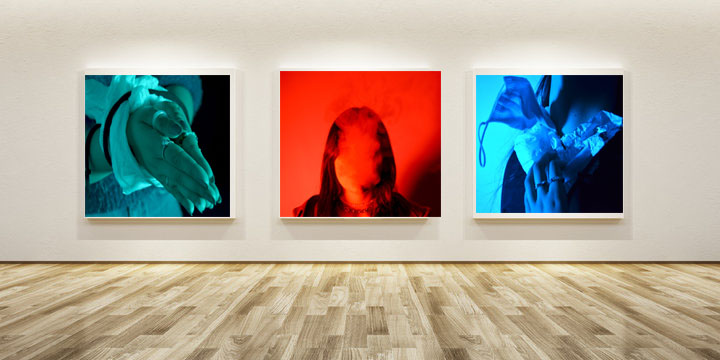
I believe that my final images worked well with Carroll’s work since I used the same concept as him. However, I focused on keeping little things in the images such as jewellery and also wanted to use coloured lights to create more of an atmosphere and have a story behind it.
For my first gallery, I wanted to put the red image in the middle because it’s the most eye catching out of all three of my images. The red also has connotations of danger and I thought that it would be best to put that in the middle so that the viewer can subconsciously understand that the images are about the danger we are putting ourselves and our planet in.
The other two images next to it have a cooler tone which is less harsh than the bright red. Although they are cooler toned, they are more aggressive images due to the fact that people are tied up or are seen struggling.

For this gallery I wanted to do the same pattern as the one above. However, I wanted to show that the two blue images result in the red image. Where smoke takes over your body, and you put yourself in danger. Just like when people emit fossil fuels into the atmosphere we are damaging the planet’s ozone layer, and consequently putting ourselves in danger. The middle image could be seen as a warning, and the other two images is the world before things get permanently damaged.
For my first photoshoot under the stimulus of Anthropocene, I have taken inspiration from Jeremy Carroll and Darian Mederos. I have chosen these two photographers as my influences as I believe that their own images are very thought provoking, and stimulate a very particular mood and feeling. In this photoshoot, I aimed to take the main principles of each artist’s images and use them to create captivating and interesting photographs.
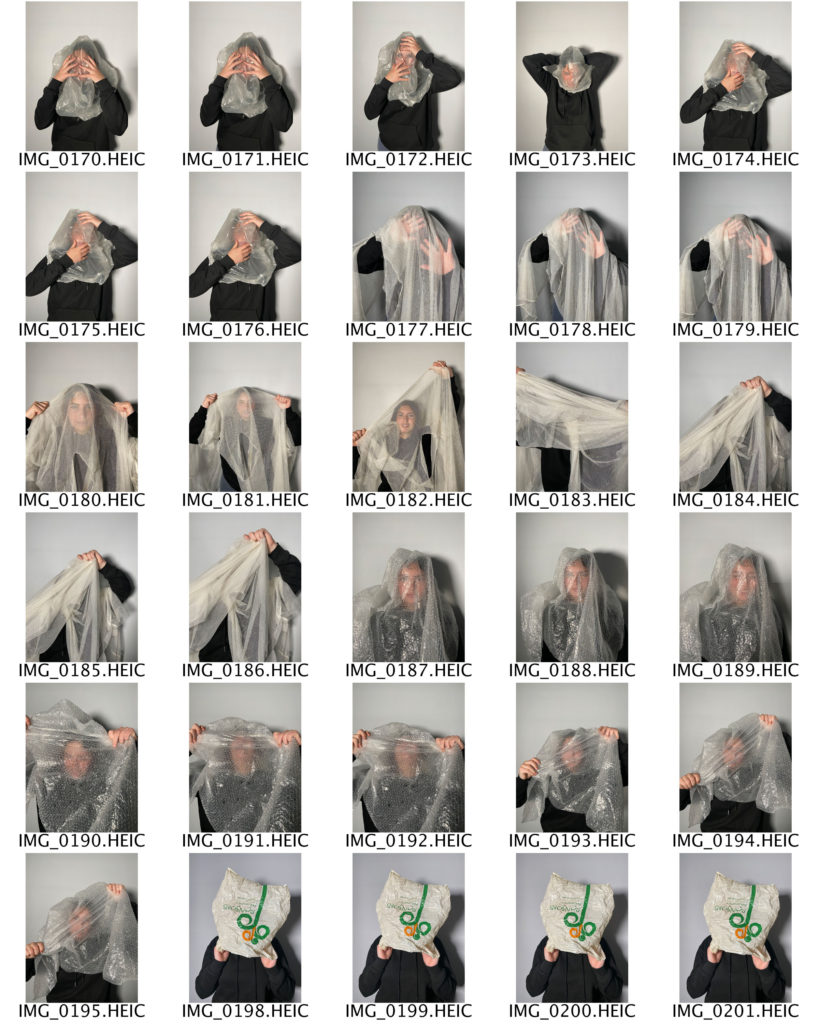

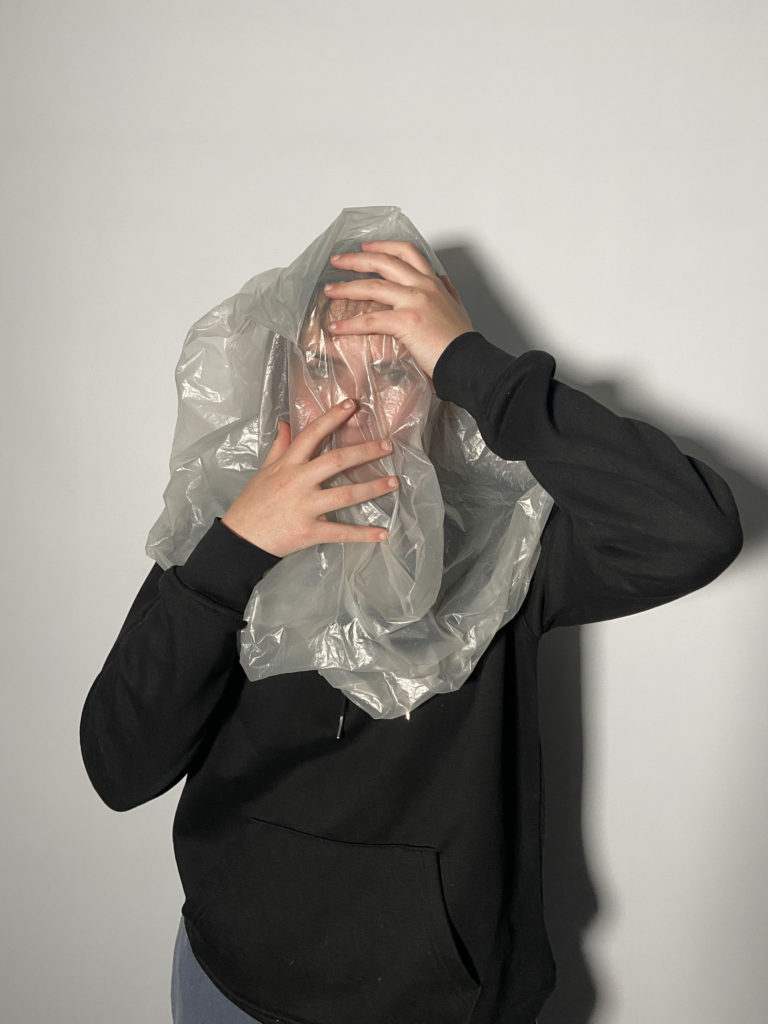






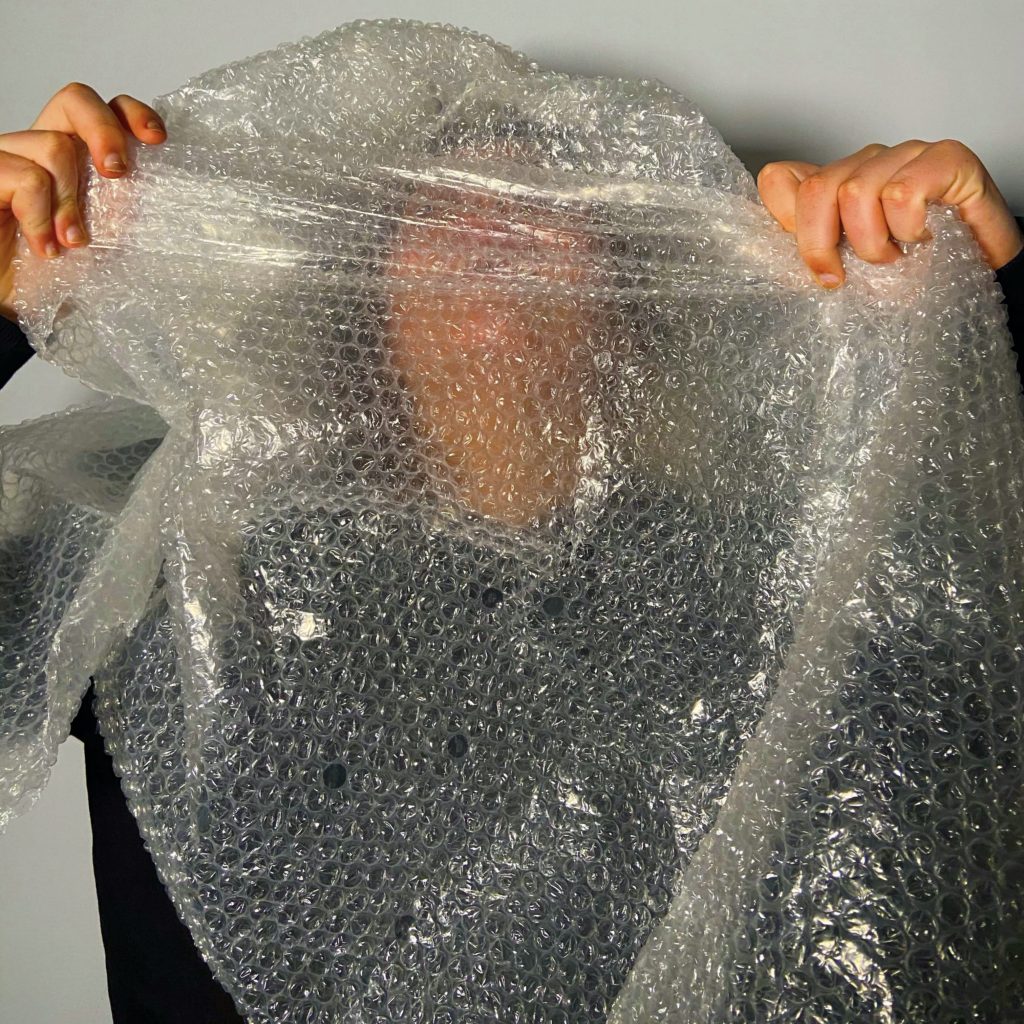

Bellissimo’s work extends beyond regular photography. Her work explores the physical and psychological relation between nature and human beings when combined through the use of collage. She precisely cuts out bits of different images and layers them together. Her work evokes a sense of empathy, intimacy and harmony while humans and nature coexist.
Images




For more of her work look at this website.
http://alexandrabellissimo.com/
Image Analysis

This image was taken in with a plain white background with white lighting; this helps the viewer focus on the model. The model has a hole where his eye should have been, the fraying around the eye shows that the hole was put there by force, just like how humans intentionally damage our world by leaving rubbish around. If you look closer at the hole in the eye, you can see there is a lighter section nearest the nose. It almost looks like bark. This shows the connection between humans and nature. When we damage nature we damage ourselves in the process.
The hole in the models eye could also emphasise the fact that we as a species ignorant and we are choosing not to notice the damage that we are doing to the world. However, the fact that the we can see the model’s other eye represents a glimmer of hope that we can change the world before it’s too late.
The model’s mouth is also slightly open which could represent that maybe the model wants to say something however is too afraid to speak up. He could also represent the people that are saying something. But because there’s such a small amount of people who aren’t afraid to speak up about these matters, compared to the population of the world, the small gap could represent the world’s view on their views and they feel like their view is insignificant.
My idea for this controlled conditions is to focus on two types of photography; still life / object photography and portraiture. Through these types of photography my aim is to effectively and successfully explore and portray the stimulus of Anthropocene. The photographer’s whose work I have been inspired by are Jeremy Carroll, Darian Mederos, and Naomi White. I have chosen these photographers as I believe their images accurately convey the mood, feeling and tone of the photographs I am aiming to produce as my final piece.
WHAT – For my first photoshoot inspired by Jeremy Carroll and Darian Mederos, I plan to take photographs of my subject covered in different objects such as plastic bags, bubble wrap, and netting in order to convey the theme of plastic pollution. For my second photoshoot, I plan to take photographs of plastic bags, inspired by the work of Naomi White.
WHERE – For both of my photoshoots I plan to take my photographs in a studio, in order to get rid of any natural elements in my images, and have them be completely focused on seeming artificial.
HOW – For my first photoshoot, I plan to use the plain white backdrop in the photography studio to give my images a formal and somewhat stilted feel, as I want the focus to be on the subject and not on the background. For my second photoshoot, I plan on utilising a different form of lighting and take my images from a bird’s eye view in order to create an unconventional aesthetic.
WHY – My overall aim for both of my two photoshoots is to capture images which reflect and draw inspiration from the work of Jeremy Carroll, Naomi White, and Darian Mederos, without producing an exact replica of their respective pieces.
